Apoptosis
As one of the cellular death mechanisms, apoptosis, also known as programmed cell death, can be defined as the process of a proper death of any cell under certain or necessary conditions. Apoptosis is controlled by the interactions between several molecules and responsible for the elimination of unwanted cells from the body.
Many biochemical events and a series of morphological changes occur at the early stage and increasingly continue till the end of apoptosis process. Morphological event cascade including cytoplasmic filament aggregation, nuclear condensation, cellular fragmentation, and plasma membrane blebbing finally results in the formation of apoptotic bodies. Several biochemical changes such as protein modifications/degradations, DNA and chromatin deteriorations, and synthesis of cell surface markers form morphological process during apoptosis.
Apoptosis can be stimulated by two different pathways: (1) intrinsic pathway (or mitochondria pathway) that mainly occurs via release of cytochrome c from the mitochondria and (2) extrinsic pathway when Fas death receptor is activated by a signal coming from the outside of the cell.
Different gene families such as caspases, inhibitor of apoptosis proteins, B cell lymphoma (Bcl)-2 family, tumor necrosis factor (TNF) receptor gene superfamily, or p53 gene are involved and/or collaborate in the process of apoptosis.
Caspase family comprises conserved cysteine aspartic-specific proteases, and members of caspase family are considerably crucial in the regulation of apoptosis. There are 14 different caspases in mammals, and they are basically classified as the initiators including caspase-2, -8, -9, and -10; and the effectors including caspase-3, -6, -7, and -14; and also the cytokine activators including caspase-1, -4, -5, -11, -12, and -13. In vertebrates, caspase-dependent apoptosis occurs through two main interconnected pathways which are intrinsic and extrinsic pathways. The intrinsic or mitochondrial apoptosis pathway can be activated through various cellular stresses that lead to cytochrome c release from the mitochondria and the formation of the apoptosome, comprised of APAF1, cytochrome c, ATP, and caspase-9, resulting in the activation of caspase-9. Active caspase-9 then initiates apoptosis by cleaving and thereby activating executioner caspases. The extrinsic apoptosis pathway is activated through the binding of a ligand to a death receptor, which in turn leads, with the help of the adapter proteins (FADD/TRADD), to recruitment, dimerization, and activation of caspase-8 (or 10). Active caspase-8 (or 10) then either initiates apoptosis directly by cleaving and thereby activating executioner caspase (-3, -6, -7), or activates the intrinsic apoptotic pathway through cleavage of BID to induce efficient cell death. In a heat shock-induced death, caspase-2 induces apoptosis via cleavage of Bid.
Bcl-2 family members are divided into three subfamilies including (i) pro-survival subfamily members (Bcl-2, Bcl-xl, Bcl-W, MCL1, and BFL1/A1), (ii) BH3-only subfamily members (Bad, Bim, Noxa, and Puma9), and (iii) pro-apoptotic mediator subfamily members (Bax and Bak). Following activation of the intrinsic pathway by cellular stress, pro‑apoptotic BCL‑2 homology 3 (BH3)‑only proteins inhibit the anti‑apoptotic proteins Bcl‑2, Bcl-xl, Bcl‑W and MCL1. The subsequent activation and oligomerization of the Bak and Bax result in mitochondrial outer membrane permeabilization (MOMP). This results in the release of cytochrome c and SMAC from the mitochondria. Cytochrome c forms a complex with caspase-9 and APAF1, which leads to the activation of caspase-9. Caspase-9 then activates caspase-3 and caspase-7, resulting in cell death. Inhibition of this process by anti‑apoptotic Bcl‑2 proteins occurs via sequestration of pro‑apoptotic proteins through binding to their BH3 motifs.
One of the most important ways of triggering apoptosis is mediated through death receptors (DRs), which are classified in TNF superfamily. There exist six DRs: DR1 (also called TNFR1); DR2 (also called Fas); DR3, to which VEGI binds; DR4 and DR5, to which TRAIL binds; and DR6, no ligand has yet been identified that binds to DR6. The induction of apoptosis by TNF ligands is initiated by binding to their specific DRs, such as TNFα/TNFR1, FasL /Fas (CD95, DR2), TRAIL (Apo2L)/DR4 (TRAIL-R1) or DR5 (TRAIL-R2). When TNF-α binds to TNFR1, it recruits a protein called TNFR-associated death domain (TRADD) through its death domain (DD). TRADD then recruits a protein called Fas-associated protein with death domain (FADD), which then sequentially activates caspase-8 and caspase-3, and thus apoptosis. Alternatively, TNF-α can activate mitochondria to sequentially release ROS, cytochrome c, and Bax, leading to activation of caspase-9 and caspase-3 and thus apoptosis. Some of the miRNAs can inhibit apoptosis by targeting the death-receptor pathway including miR-21, miR-24, and miR-200c.
p53 has the ability to activate intrinsic and extrinsic pathways of apoptosis by inducing transcription of several proteins like Puma, Bid, Bax, TRAIL-R2, and CD95.
Some inhibitors of apoptosis proteins (IAPs) can inhibit apoptosis indirectly (such as cIAP1/BIRC2, cIAP2/BIRC3) or inhibit caspase directly, such as XIAP/BIRC4 (inhibits caspase-3, -7, -9), and Bruce/BIRC6 (inhibits caspase-3, -6, -7, -8, -9).
Any alterations or abnormalities occurring in apoptotic processes contribute to development of human diseases and malignancies especially cancer.
References:
1.Yağmur Kiraz, Aysun Adan, Melis Kartal Yandim, et al. Major apoptotic mechanisms and genes involved in apoptosis[J]. Tumor Biology, 2016, 37(7):8471.
2.Aggarwal B B, Gupta S C, Kim J H. Historical perspectives on tumor necrosis factor and its superfamily: 25 years later, a golden journey.[J]. Blood, 2012, 119(3):651.
3.Ashkenazi A, Fairbrother W J, Leverson J D, et al. From basic apoptosis discoveries to advanced selective BCL-2 family inhibitors[J]. Nature Reviews Drug Discovery, 2017.
4.McIlwain D R, Berger T, Mak T W. Caspase functions in cell death and disease[J]. Cold Spring Harbor perspectives in biology, 2013, 5(4): a008656.
5.Ola M S, Nawaz M, Ahsan H. Role of Bcl-2 family proteins and caspases in the regulation of apoptosis[J]. Molecular and cellular biochemistry, 2011, 351(1-2): 41-58.
What is Apoptosis? The Apoptotic Pathways and the Caspase Cascade
Targets for Apoptosis
- Pyroptosis(15)
- Caspase(77)
- 14.3.3 Proteins(3)
- Apoptosis Inducers(71)
- Bax(15)
- Bcl-2 Family(136)
- Bcl-xL(13)
- c-RET(15)
- IAP(32)
- KEAP1-Nrf2(73)
- MDM2(21)
- p53(137)
- PC-PLC(6)
- PKD(8)
- RasGAP (Ras- P21)(2)
- Survivin(8)
- Thymidylate Synthase(12)
- TNF-α(141)
- Other Apoptosis(1145)
- Apoptosis Detection(0)
- Caspase Substrate(0)
- APC(6)
- PD-1/PD-L1 interaction(60)
- ASK1(4)
- PAR4(2)
- RIP kinase(47)
- FKBP(22)
Products for Apoptosis
- Cat.No. 상품명 정보
-
GC12426
Birinapant (TL32711)
cIAP1, cIAP2 및 XIAP의 상대작용제
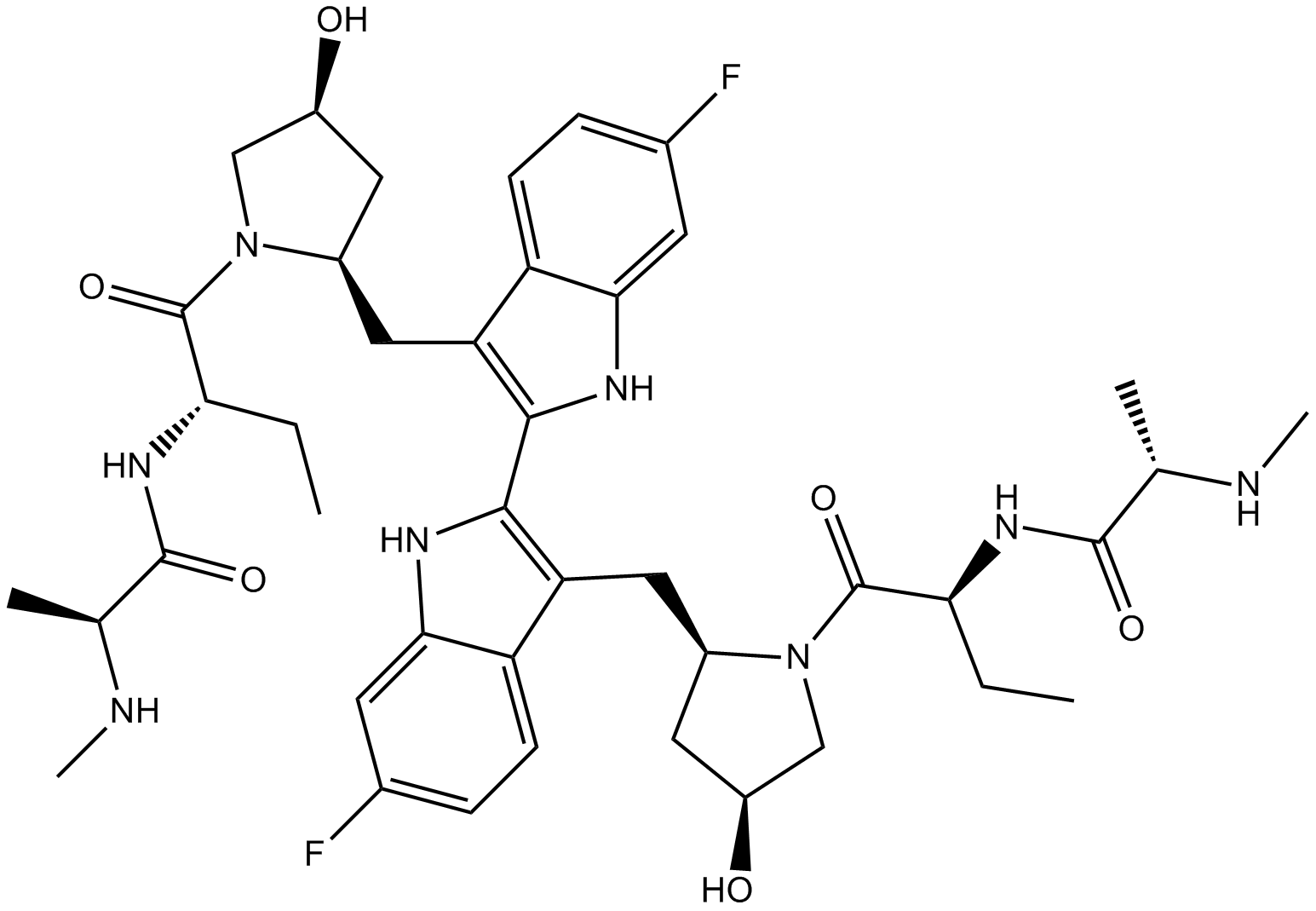
-
GN10037
Bisdemethoxycurcumin
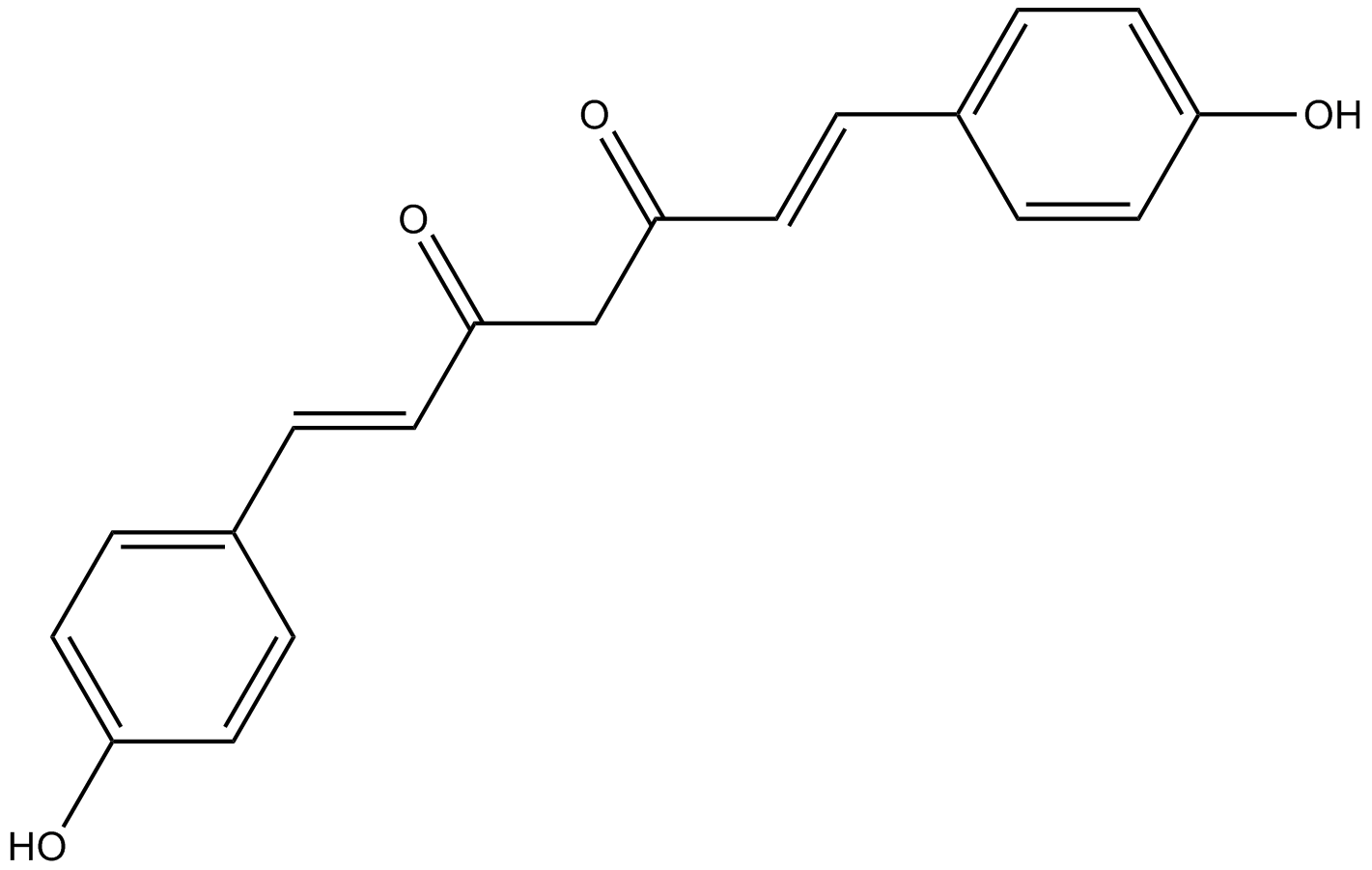
-
GC68308
Bisdemethoxycurcumin-d8
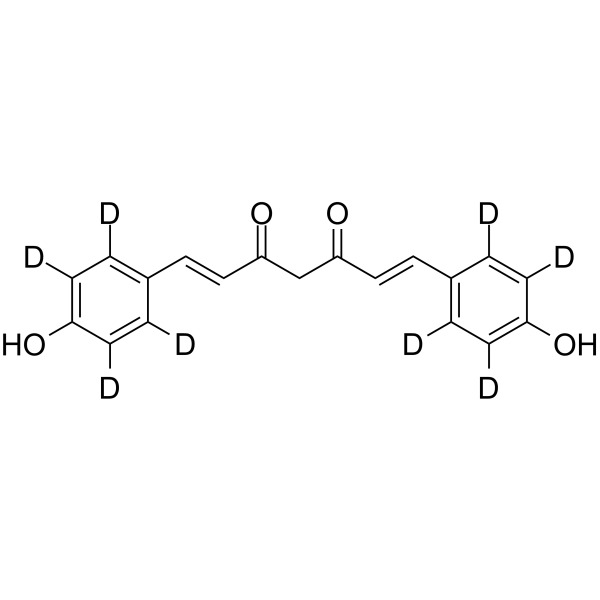
-
GC35530
BJE6-106
BJE6-106(B106)은 IC50이 0.05μM인 강력한 선택적 3세대 PKCδ 억제제이며 기존 PKC 동종효소 PKCα(IC50=50μM)에 대한 선택성을 목표로 합니다.

-
GC11931
BKM120
An inhibitor of class I PI3K isoforms
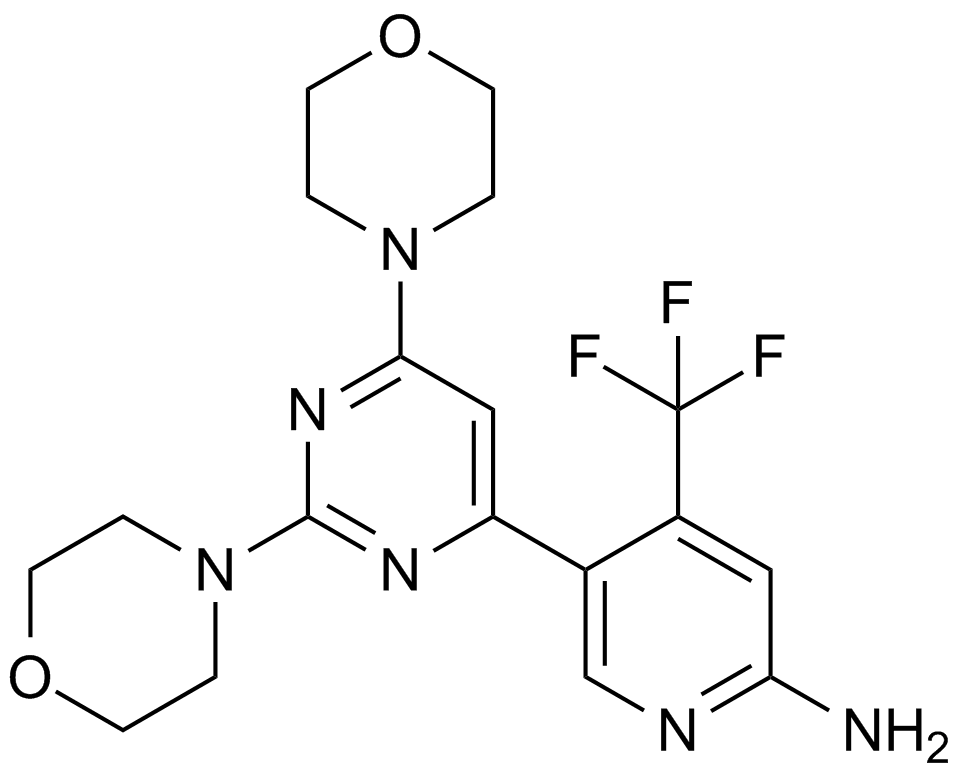
-
GC65428
BLM-IN-1
BLM-IN-1(화합물 29)은 BLM에 대해 1.81μM의 강력한 BLM 결합 KD 및 0.95μM의 IC50을 갖는 효과적인 블룸 증후군 단백질(BLM) 억제제입니다. 암 세포에서 DNA 손상 반응과 세포자멸사 및 증식 억제를 유도합니다.
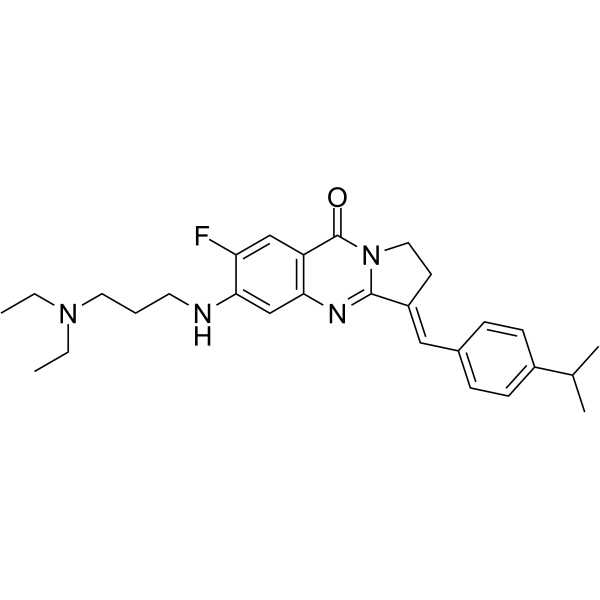
-
GC33407
BM 957
BM 957은 강력한 Bcl-2 및 Bcl-xL 억제제이며 Kis는 각각 1.2, <1 nM 및 IC50s는 5.4, 6.0 nM입니다.
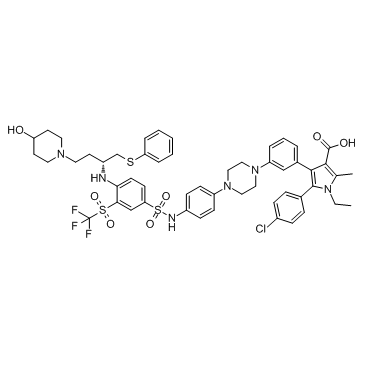
-
GC13498
BM-1074
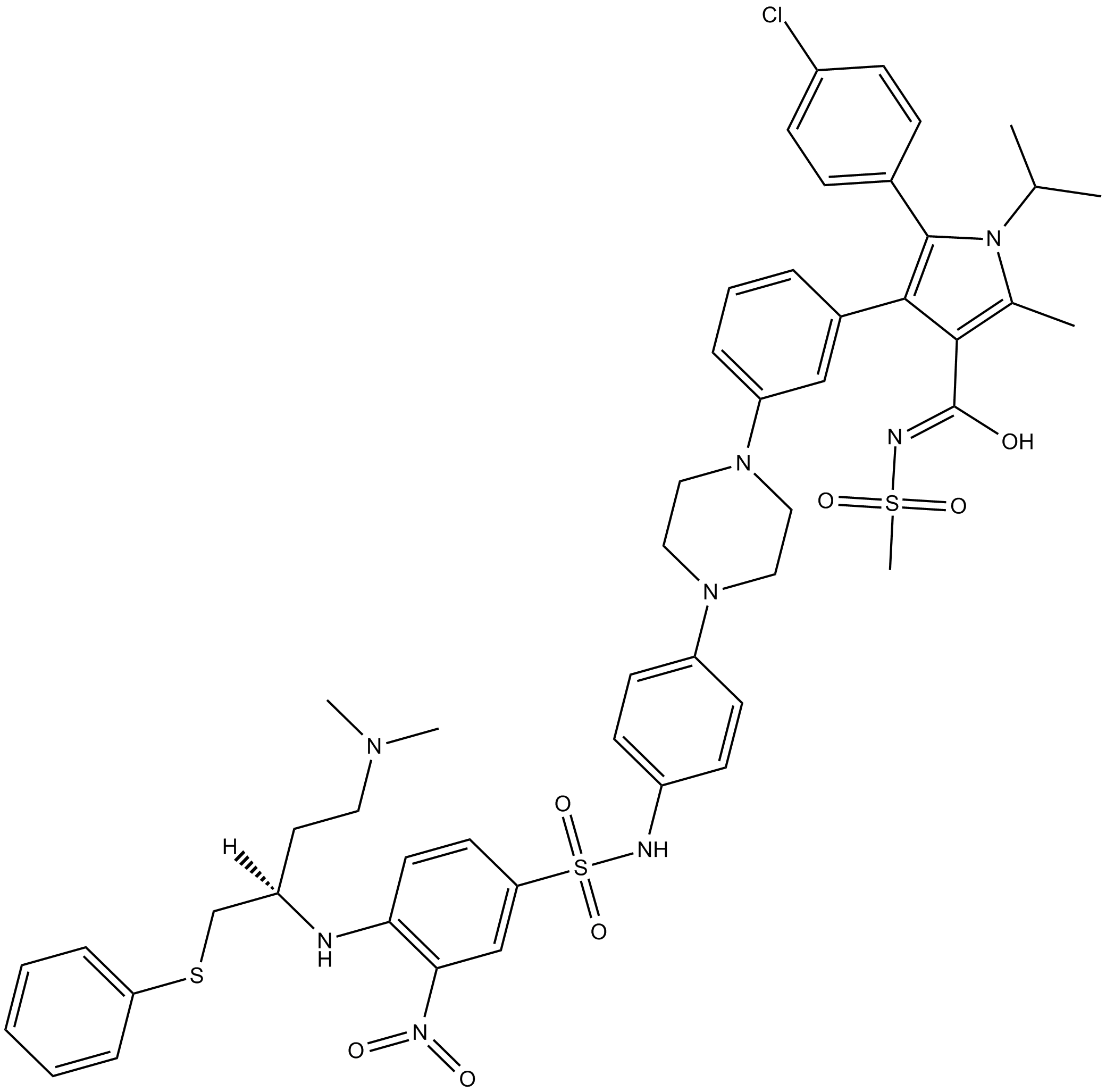
-
GC62871
BM-1244
BM-1244(APG-1252-M1)는 Bcl-xL 및 Bcl-2에 대해 각각 134 및 450nM의 Kis를 갖는 강력한 Bcl-xL/Bcl-2 억제제입니다. BM-1244는 5nM의 EC50으로 노화 섬유아세포(SnC)를 억제합니다. (특허 WO2019033119A1에서).
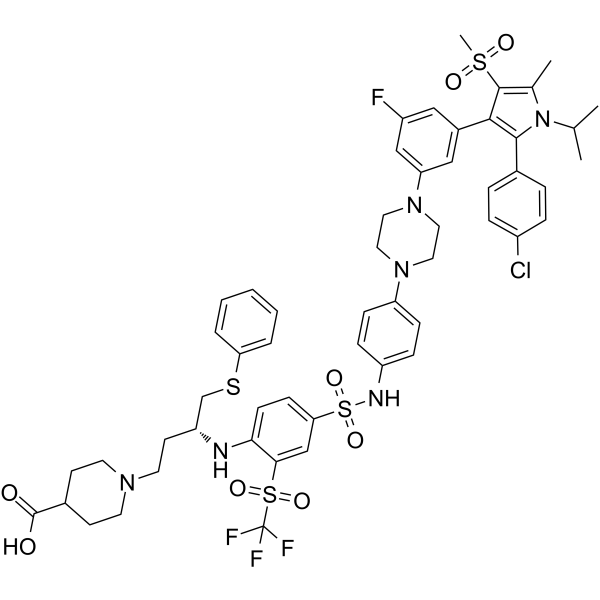
-
GC12822
BML-210(CAY10433)
BML-210(CAY10433)은 새로운 HDAC 억제제이며 그 작용 기전은 특성화되지 않았습니다.

-
GC11648
BML-277
BML-277은 IC50이 15nM인 선택적 체크포인트 키나제 2(Chk2) 억제제입니다.
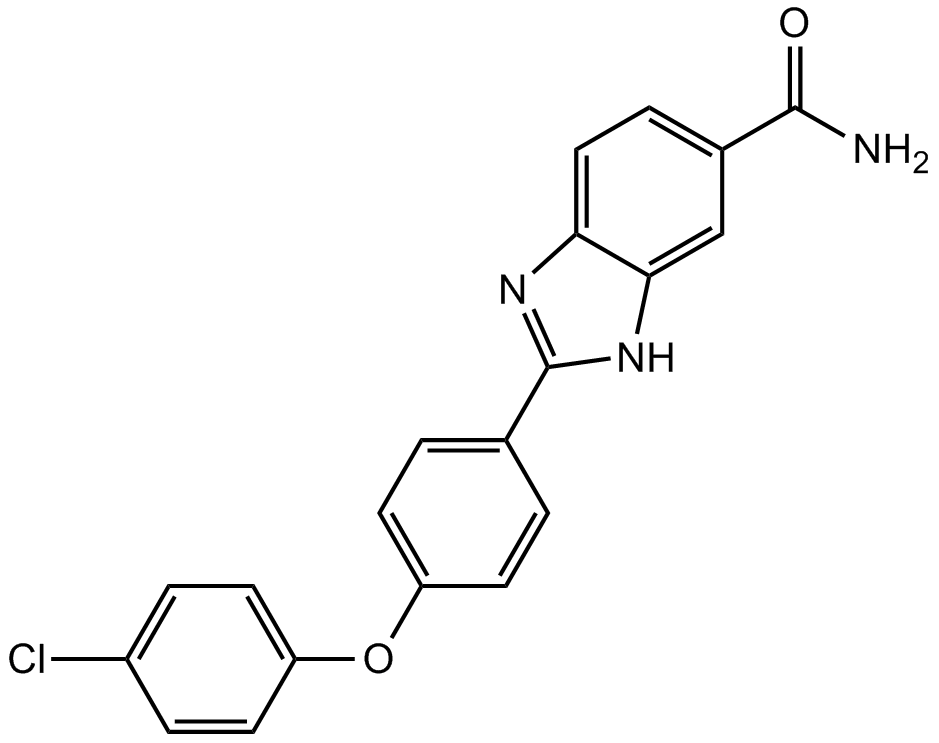
-
GC42953
BMS 345541 (trifluoroacetate salt)
BMS 345541 is a cell permeable inhibitor of the IκB kinases IKKα and IKKβ (IC50s = 4 and 0.3 μM).
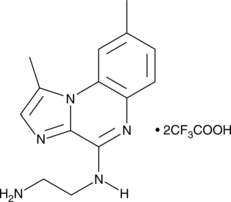
-
GC25160
BMS-1001
BMS-1001 is a potent inhibitor of PD-1/PD-L1 interaction with EC50 of 253 nM. BMS-1001 alleviates the inhibitory effect of the soluble PD-L1 on the T-cell receptor-mediated activation of T-lymphocytes.
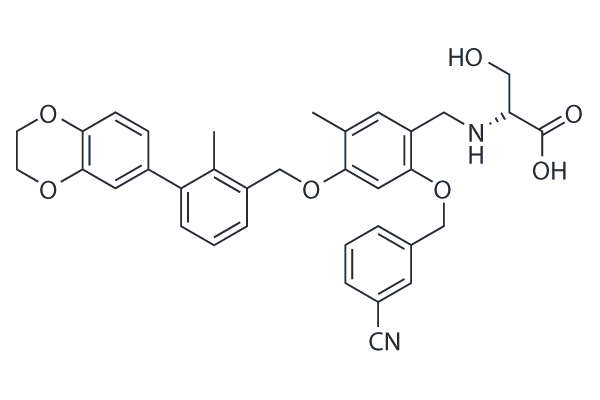
-
GC38740
BMS-1001 hydrochloride
BMS-1001 염산염은 경구 활성 인간 PD-L1/PD-1 면역 관문 억제제입니다.
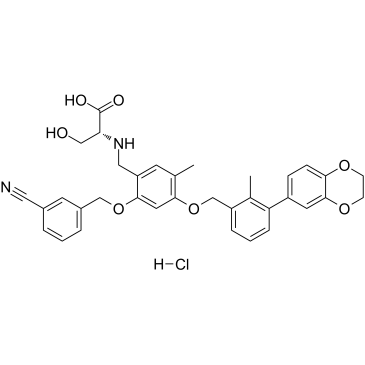
-
GC31753
BMS-1166 (PD-1/PD-L1-IN1)
BMS-1166(PD-1/PD-L1-IN1)은 강력한 PD-1/PD-L1 면역 관문 억제제입니다.
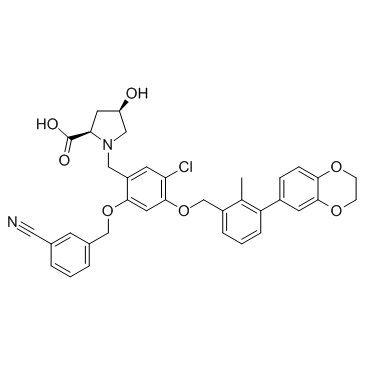
-
GC38131
BMS-1166 hydrochloride
BMS-1166 염산염은 강력한 PD-1/PD-L1 면역 관문 억제제입니다.

-
GC13628
BMS-833923
An orally bioavailable Smo inhibitor
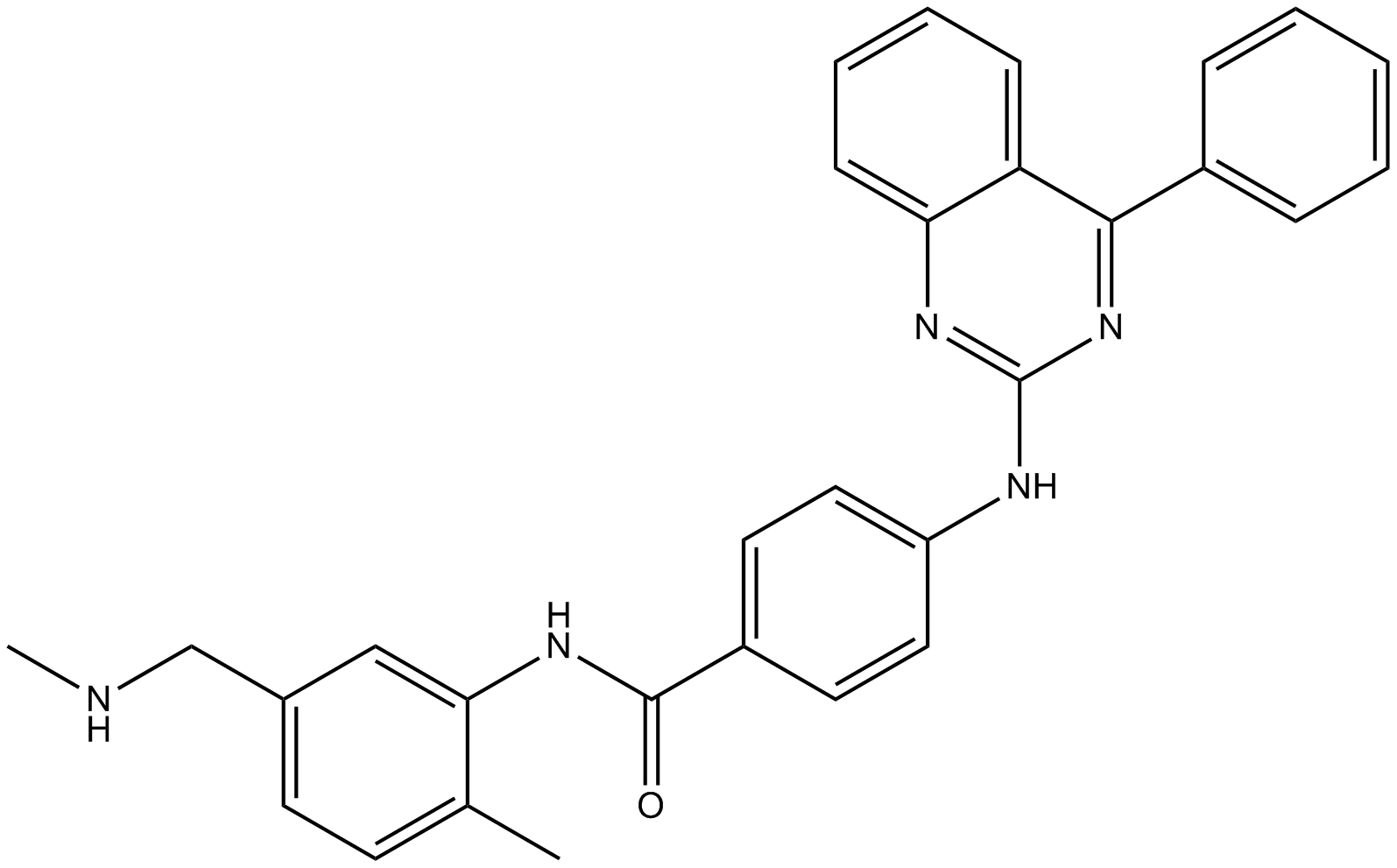
-
GC62682
BMSpep-57 hydrochloride
BMSpep-57 염산염은 7.68nM의 IC50과 PD-1/PD-L1 상호작용의 강력하고 경쟁력 있는 거대고리 펩티드 억제제입니다. BMSpep-57 염산염은 MST 및 SPR 분석에서 각각 19nM 및 19.88nM의 Kds로 PD-L1에 결합합니다. BMSpep-57 염산염은 PBMC에서 IL-2 생산을 증가시켜 T 세포 기능을 촉진합니다.
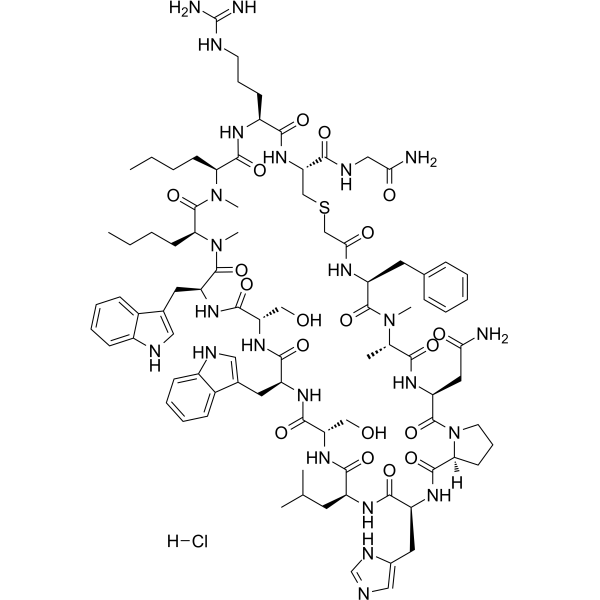
-
GA20897
Boc-Arg(Boc)₂-OH
An amino acid building block

-
GC16774
Boc-D-FMK
An irreversible pan-caspase inhibitor
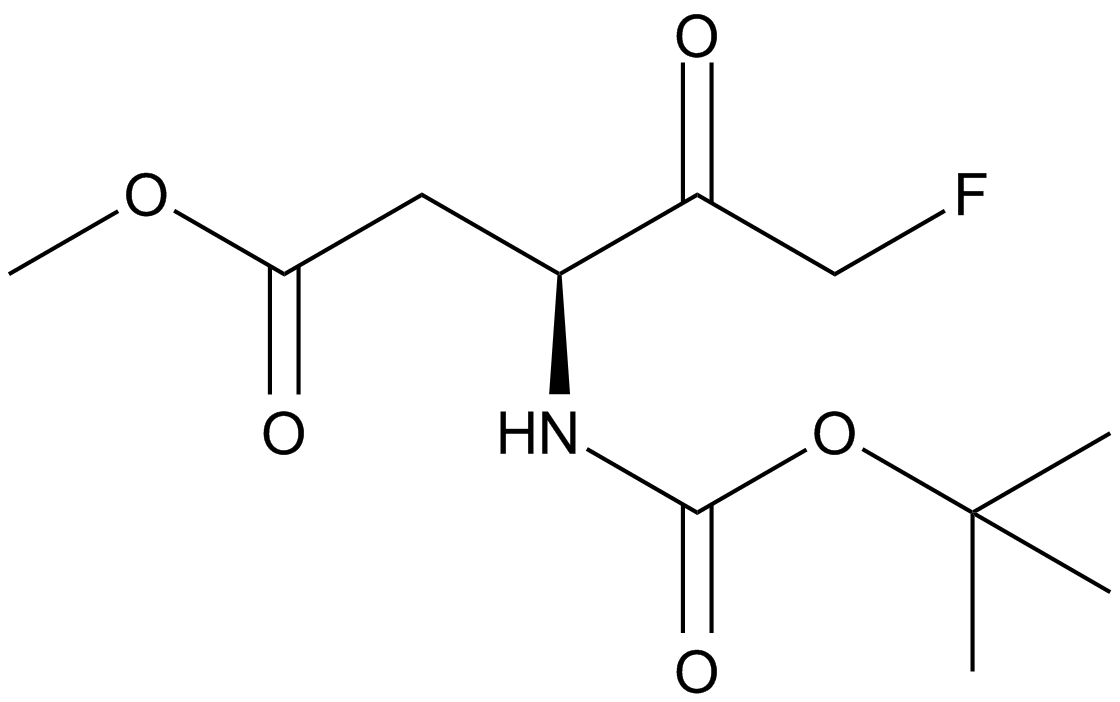
-
GC33501
Bornyl acetate
보르닐 아세테이트는 가장 높은 향미 희석 인자(FD factor) 중 하나를 나타내는 강력한 취기제입니다. 보르닐 아세테이트는 항암 활성을 가지고 있습니다.
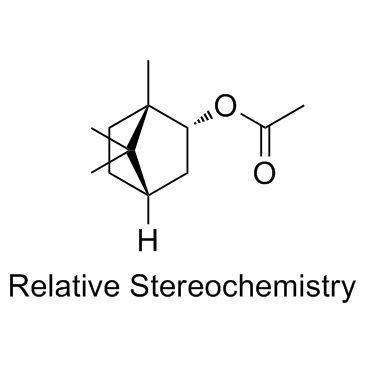
-
GC11040
Borrelidin
Borrelidin(Treponemycin)은 Streptomyces rochei에서 분리된 니트릴 함유 마크로라이드 항생제인 박테리아 및 진핵성 트레오닐-tRNA 합성효소 억제제입니다.
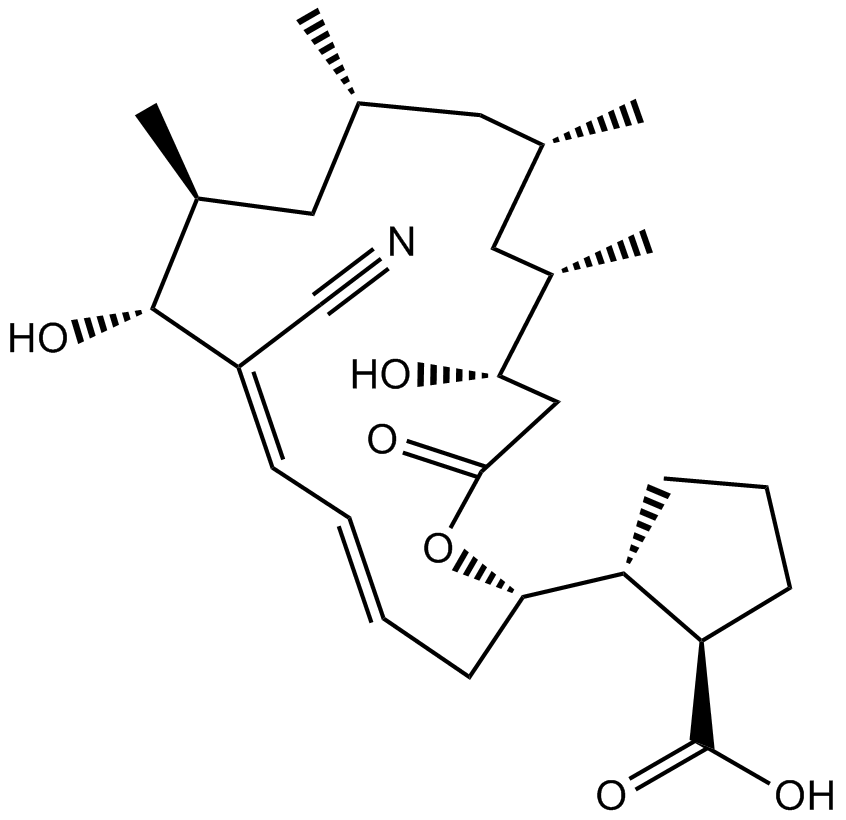
-
GC17644
Bortezomib (PS-341)
강력하고, 가역적인 20S 프로테아솜 억제제
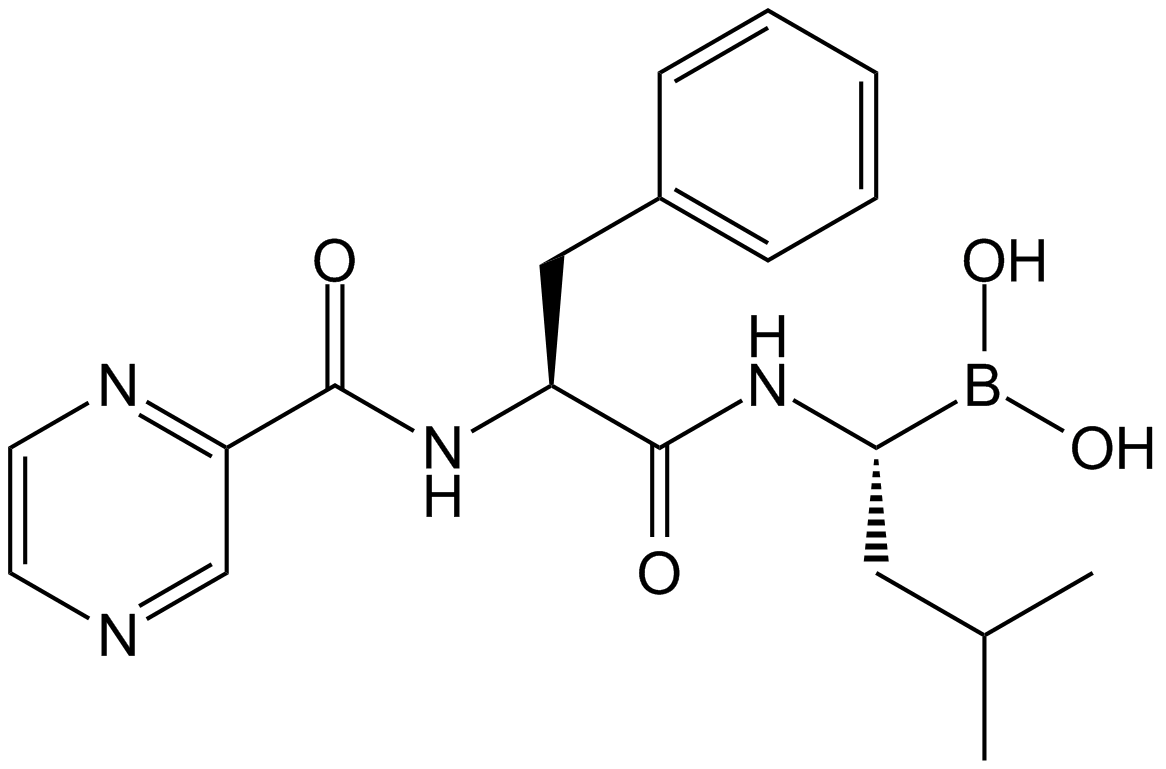
-
GC65010
Bortezomib-d8
보르테조밉-d8(PS-341-d8)은 보르테조밉으로 표시된 중수소입니다. 보르테조밉(PS-341)은 가역적이고 선택적인 프로테아좀 억제제이며 트레오닌 잔기를 표적으로 하여 20S 프로테아좀(Ki=0.6nM)을 강력하게 억제합니다. Bortezomib은 세포주기를 방해하고 세포 사멸을 유도하며 NF-κB를 억제합니다. 보르테조밉은 최초의 프로테아좀 억제제 항암제입니다. 항암 활성.

-
GC40009
Bostrycin
Bostrycin is an anthraquinone originally isolated from B.

-
GC42969
bpV(phen) (potassium hydrate)
인슐린 모방제인 bpV(phen)(칼륨 수화물)는 PTEN, PTP-β에 대한 IC50이 38nM, 343nM 및 920nM인 강력한 단백질 티로신 포스파타제(PTP) 및 PTEN 억제제입니다. 및 PTP-1B 각각.

-
GC42974
Brassinin
브라시닌은 브라시카 종의 파이토알렉신의 대사입니다.
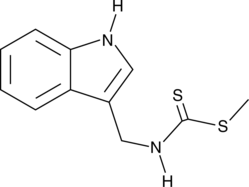
-
GC11632
Brassinolide
A plant growth regulator

-
GC52101
Brazilein
Brazilein은 Caesalpinia sappan L.에서 분리된 중요한 면역억제 성분입니다.
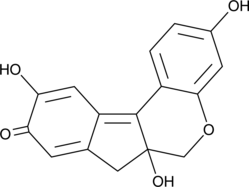
-
GN10802
Brazilin

-
GC68288
Brentuximab
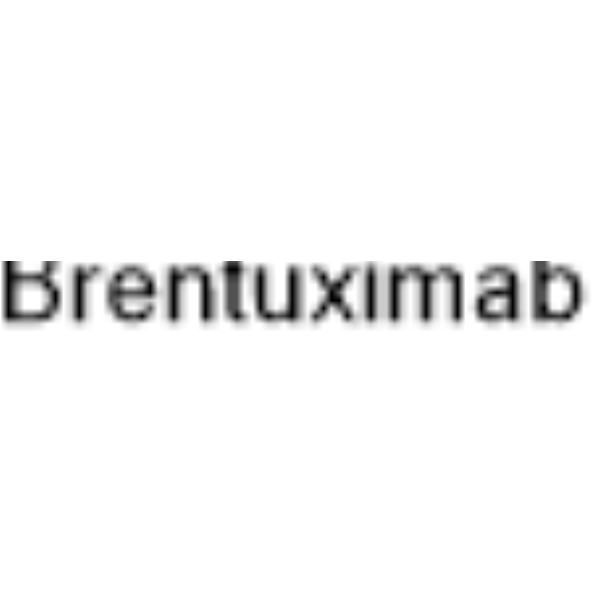
-
GC35554
Brevilin A
Brevilin A는 경구 활성 STAT3/JAK 억제제입니다(STAT3 IC50=10.6 μM). Brevilin A는 암세포에 대한 항종양 활성, 항증식 활성을 나타내며, 세포자살 및 자가포식을 유도할 수 있습니다.

-
GC35555
Britannin
Inula aucheriana에서 분리된 Britannin은 세스퀴테르펜 락톤입니다.
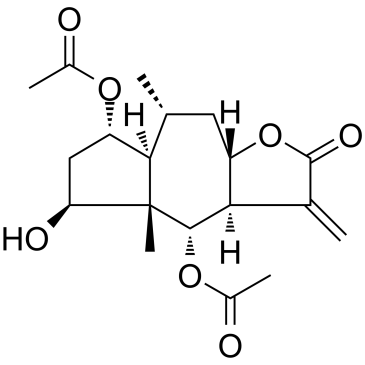
-
GC62536
Bromelain
Bromelain은 플라즈마 키니노겐의 하향 조절, 프로스타글란딘 E2 발현의 억제, 고급 당화 최종 생성물 수용체의 분해 및 혈관신생 바이오마커의 조절 및 COX-경로 상류의 항산화 작용을 통해 작용하는 파인애플 줄기에서 추출한 항염증제입니다. .
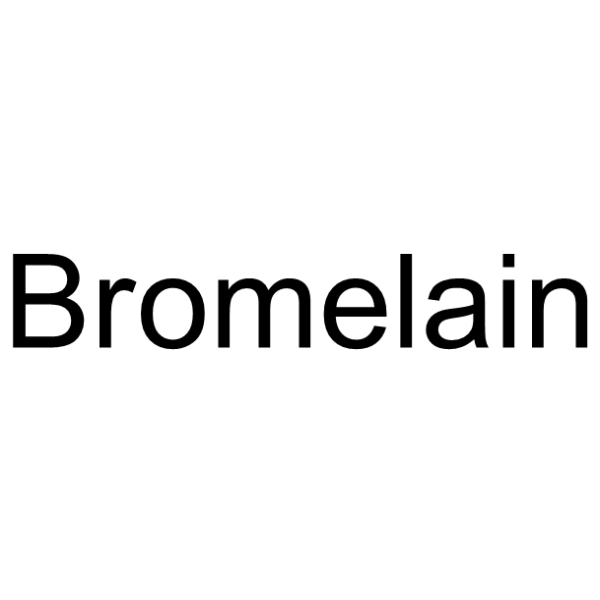
-
GC35559
Bruceine D
Bruceine D는 항암 활성이 있는 Notch 억제제이며 여러 인간 암세포에서 세포자멸사를 유도합니다.
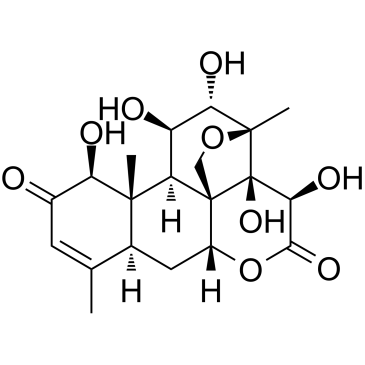
-
GC34070
Brusatol (NSC 172924)
Brusatol(NSC 172924)(NSC172924)은 광범위한 암세포를 시스플라틴 및 기타 화학요법제에 민감하게 만드는 Nrf2 경로의 고유한 억제제입니다. Brusatol(NSC 172924)은 Nrf2 매개 방어 기전을 억제하여 화학 요법의 효능을 향상시킵니다. Brusatol(NSC 172924)은 보조 화학요법제로 개발될 수 있습니다. Brusatol(NSC 172924)은 세포 사멸을 증가시킵니다.
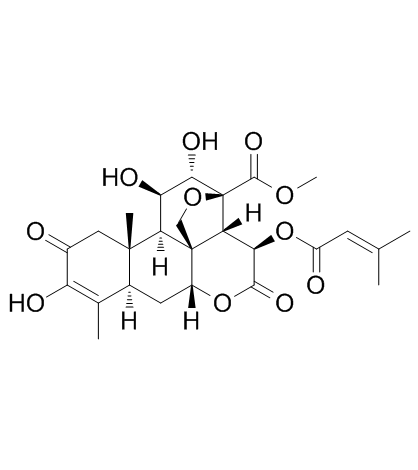
-
GC38014
BT2
BT2는 IC50이 3.19μM인 BCKDC 키나제(BDK) 억제제입니다.
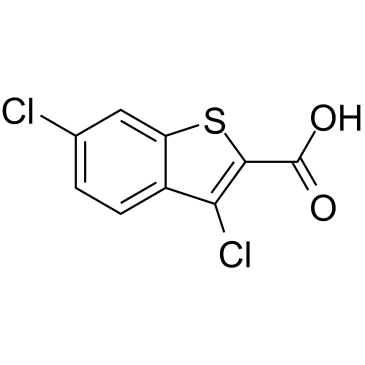
-
GC38467
BTdCPU
BTdCPU는 강력한 헴 조절 eIF2α 키나제(HRI) 활성제입니다. BTdCPU는 eIF2α 인산화를 촉진하고 내성 세포에서 세포 사멸을 유도합니다.
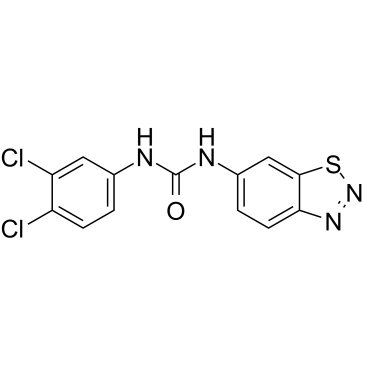
-
GC34511
BTR-1
BTR-1은 활성 항암제로 S기 정지를 유발하고 백혈병 세포에서 DNA 복제에 영향을 미칩니다. BTR-1은 세포 사멸을 활성화하고 세포 사멸을 유도합니다.

-
GC11141
BTZO 1
BTZO 1은 68.6nM의 Kd 값으로 대식세포 이동 억제 인자(MIF)에 결합하며, 이 결합에는 N-말단 Pro1이 필요합니다.
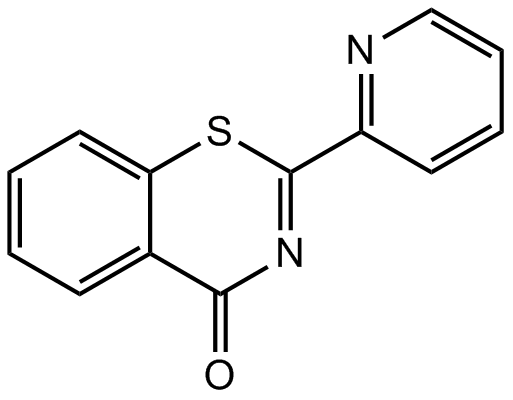
-
GC48376
Burnettramic Acid A
A fungal metabolite with diverse biological activities
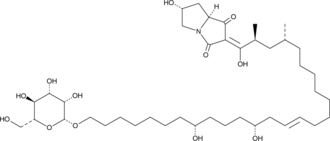
-
GC48409
Burnettramic Acid A aglycone
Burnettramic acid A aglycone은 Aspergillus burnettii에서 발견되는 곰팡이 대사 산물입니다.
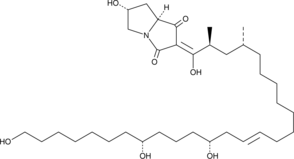
-
GC13671
Busulfan
Busulfan은 골수에 선택적 면역억제 효과가 있는 강력한 알킬화제입니다.
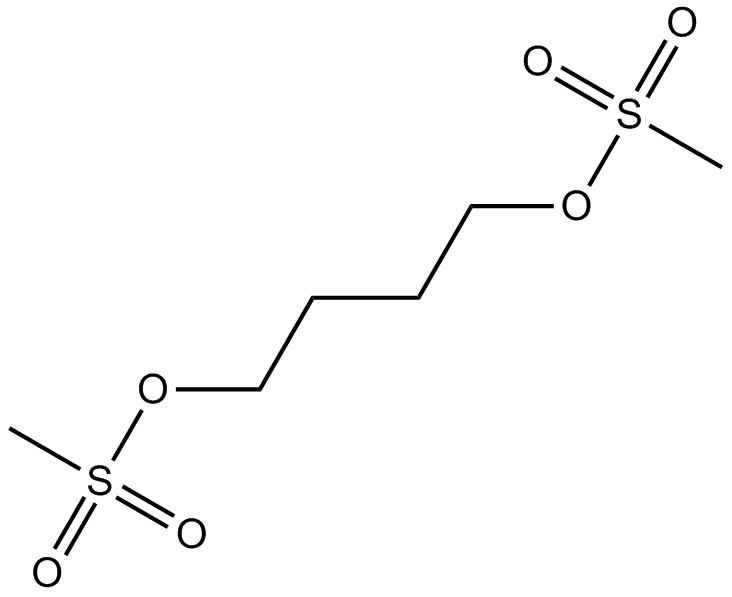
-
GC46962
Busulfan-d8
Busulfan-D8은 Busulfan이라고 표시된 중수소입니다. Busulfan은 알킬화 항종양제로 작용하는 알킬 설포네이트입니다. Busulfan은 DNA에서 내부 및 가닥 간 가교를 형성합니다. 포유류에서 부설판은 림프구 수준이나 체액성 항체 반응에 큰 영향을 미치지 않으면서 조혈 전구 세포의 생성을 심각하고 장기간 감소시킵니다.

-
GC10944
Butein
부테인은 PDE4에 대한 IC50이 10.4μM인 cAMP 특이적 PDE 억제제입니다. 부테인은 HepG2 세포에서 EGFR 및 p60c-src에 대해 16 및 65μM의 IC50을 갖는 특정 단백질 티로신 키나제 억제제입니다. 부테인은 FoxO3a를 표적으로 하여 AKT 및 ERK/p38 MAPK 경로를 통해 HeLa 세포를 Cisplatin에 민감하게 합니다. 부테인은 SIRT1 활성화제(STAC)입니다.
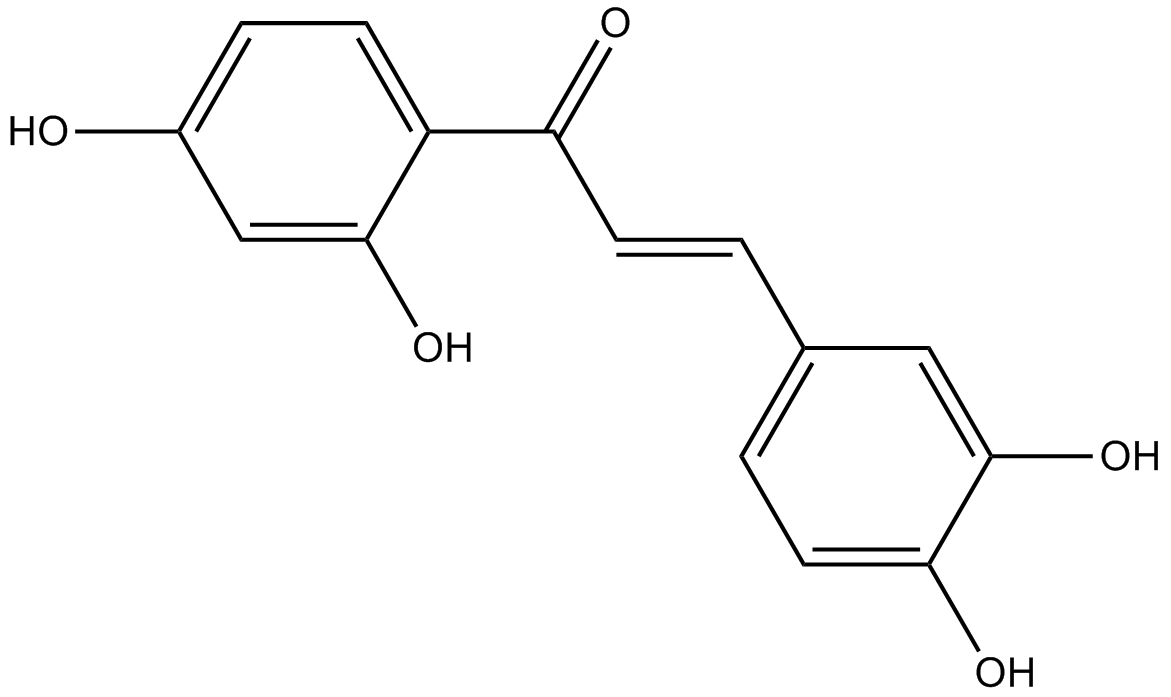
-
GC46104
Butyric Acid-d7
An internal standard for the quantification of sodium butyrate
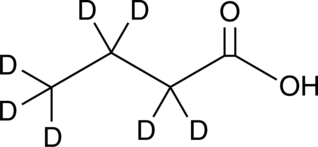
-
GC12333
BV6
BV6은 세포자멸사 억제제(IAP) 계열의 구성원인 cIAP1 및 XIAP의 길항제입니다.

-
GC48433
BX-320
BX-320은 직접 키나제 분석 형식에서 IC50이 30nM인 선택적 ATP-경쟁적 경구 활성 및 직접 PDK1 억제제입니다. BX-320은 또한 apoptosis를 유도합니다. 항암 효과.

-
GC16818
BX-912
BX-912는 직접적이고 선택적이며 ATP 경쟁적인 PDK1 억제제(IC50=26nM)입니다. BX-912는 종양 세포에서 PDK1/Akt 신호 전달을 차단하고 배양물에서 다양한 종양 세포주의 고정 의존적 성장을 억제하거나 세포 사멸을 유도합니다.

-
GC31806
Bz 423 (BZ48)
Bz 423(BZ48)은 자가반응성 림프구에 대한 선택성을 나타내는 루푸스의 쥐 모델에서 치료 특성을 갖는 세포자멸사 1,4-벤조디아제핀이며 Bax 및 Bak을 활성화합니다.

-
GC33826
C 87
C 87은 새로운 소분자 TNFα 억제제입니다. 8.73μM의 IC50으로 TNFα 유도 세포독성을 강력하게 억제합니다.

-
GC19095
C-DIM12
C-DIM12는 합성 Nurr1 활성제로 세포주와 1차 뉴런에서 Nurr1 및 DA 유전자 발현을 유도합니다.

-
GC43028
C16 Ceramide (d18:1/16:0)
세라마이드는 스핑고미엘린 분해효소의 활성화 또는 세린 팔미토일 전이효소와 세라마이드 합성효소의 조정 작용을 필요로하는 신규 합성 경로를 통해 스피노미엘린에서 생성됩니다.

-
GC46976
C16 Ceramide-d7 (d18:1-d7/16:0)
An internal standard for the quantification of C-16 ceramide
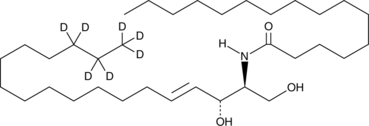
-
GC43052
C18 Phytoceramide (t18:0/18:0)
C18 Phytoceramide (t18:0/18:0) (Cer(t18:0/18:0)) is a bioactive sphingolipid found in S.

-
GC40141
C18 Phytoceramide-d3 (t18:0/18:0-d3)
C18 Phytoceramide-d3 (t18:0/18:0-d3) is intended for use as an internal standard for the quantification of C18 phytoceramide (t18:0/18:0) by GC- or LC-MS.

-
GC43065
C2 Phytoceramide (t18:0/2:0)
C2 Phytoceramide is a bioactive semisynthetic sphingolipid that inhibits formyl peptide-induced oxidant release (IC50 = 0.38 μM) in suspended polymorphonuclear cells.
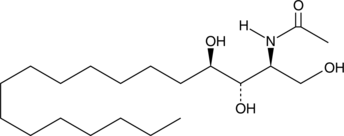
-
GC43069
C22 Ceramide (d18:1/22:0)
C-22 ceramide is an endogenous bioactive sphingolipid.

-
GC43075
C24 dihydro Ceramide (d18:0/24:0)
C24 dihydro Ceramide is a sphingolipid that has been found in the stratum corneum of human skin.
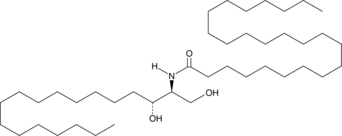
-
GC34513
C25-140
C25-140은 동급 최초의 경구 활성이며 상당히 선택적인 TRAF6-Ubc13 억제제로 TRAF6에 직접 결합하고 TRAF6과 Ubc13의 상호작용을 차단합니다.
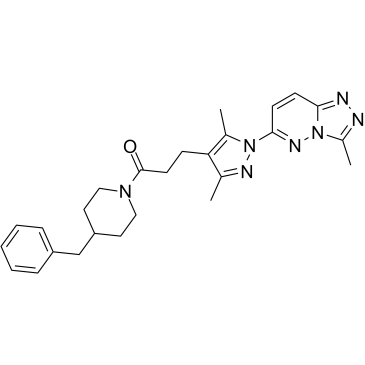
-
GC43084
C4 Ceramide (d18:1/4:0)
C4 Ceramide is a bioactive sphingolipid and cell-permeable analog of naturally occurring ceramides.
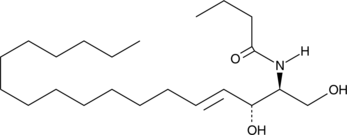
-
GC40688
C6 D-threo Ceramide (d18:1/6:0)
C6 D-threo Ceramide is a bioactive sphingolipid and cell-permeable analog of naturally occurring ceramides., C6 D-threo Ceramide is cytotoxic to U937 cells in vitro (IC50 = 18 μM).

-
GC40689
C6 L-erythro Ceramide (d18:1/6:0)
C6 L-erythro Ceramide is a bioactive sphingolipid and cell-permeable analog of naturally occurring ceramides.

-
GC40690
C6 L-threo Ceramide (d18:1/6:0)
C6 L-쓰레오 세라마이드(d18:1/6:0)는 자연적으로 발생하는 세라마이드의 생리활성 스핑고리피드 및 세포 투과성 유사체입니다.

-
GC45616
C6 Urea Ceramide
An inhibitor of neutral ceramidase

-
GC12733
C646
C646은 Ki가 400nM인 선택적이고 경쟁적인 히스톤 아세틸트랜스퍼라제 p300 억제제이며 다른 아세틸트랜스퍼라제에 대해서는 덜 강력합니다.
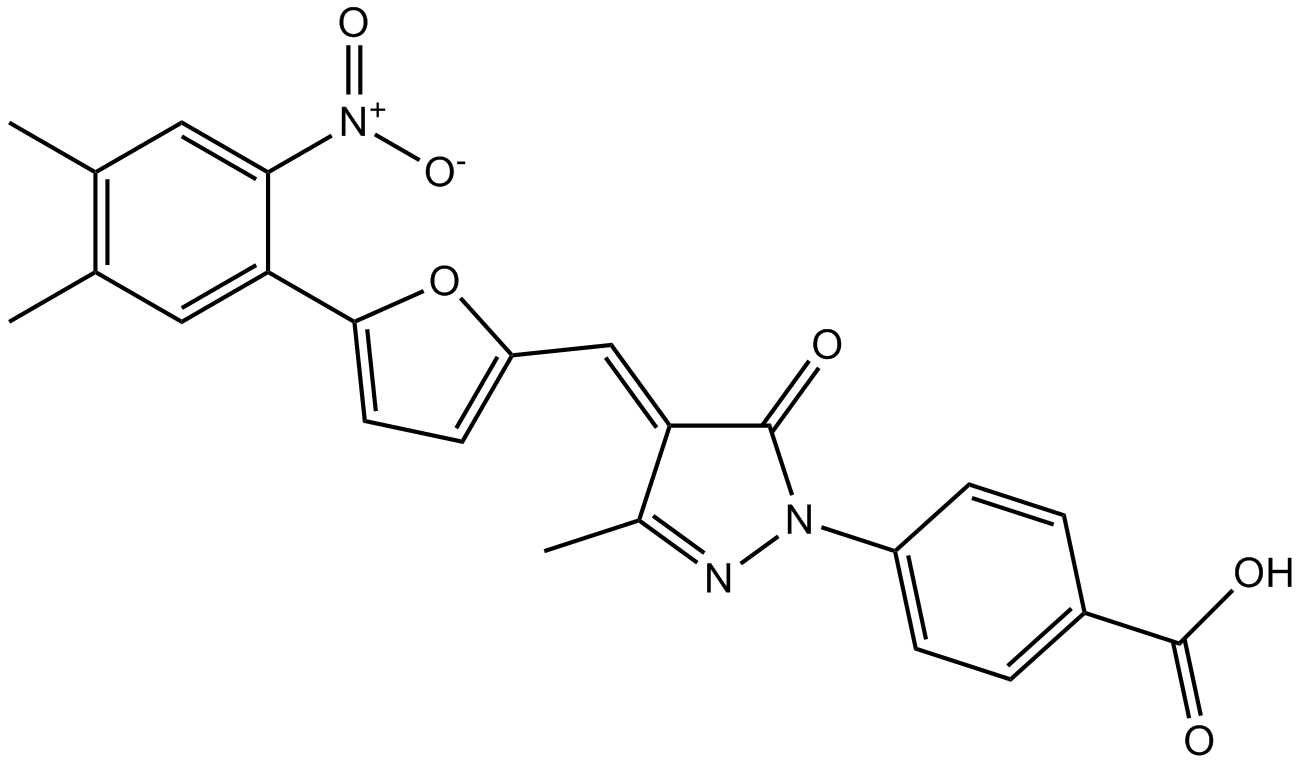
-
GC43105
C8 Ceramide (d18:1.8:0)
C8 세라마이드 (d18:1.8:0) (N-옥타노일-D-에리스로-스핑고신)은 자연적으로 존재하는 세라마이드의 세포내 투과성 아날로그입니다.
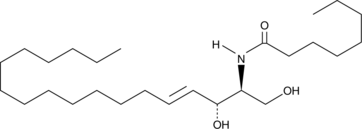
-
GC43109
C8 D-threo Ceramide (d18:1/8:0)
C8 D-threo Ceramide is a bioactive sphingolipid and cell-permeable analog of naturally occurring ceramides.

-
GC43110
C8 Galactosylceramide (d18:1/8:0)
C8 Galactosylceramide is a synthetic C8 short-chain derivative of known membrane microdomain-forming sphingolipids.

-
GC43111
C8 L-threo Ceramide (d18:1/8:0)
C8 L-threo Ceramide is a bioactive sphingolipid and cell-permeable analog of naturally occurring ceramides.

-
GC33218
CA-5f
CA-5f는 autophagosome-lysosome 융합 억제를 통한 강력한 후기 거대자가포식/자가포식 억제제입니다. CA-5f는 LC3B-II(자가포식을 모니터링하는 마커) 및 SQSTM1 단백질을 증가시키고 ROS 생성도 증가시킵니다. 항종양 활성.
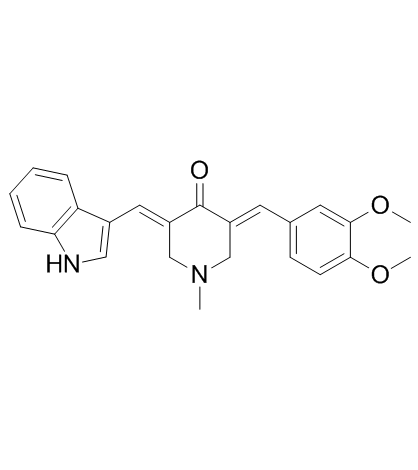
-
GC15779
Cabozantinib (XL184, BMS-907351)
카보잔티닙(XL184, BMS-907351)은 VEGFR2 및 MET의 강력한 경구 활성 억제제이며 IC50 값은 각각 0.035 및 1.3nM입니다. 카보잔티닙(XL184, BMS-907351)은 KIT, RET, AXL, TIE2 및 FLT3(각각 IC50=4.6, 5.2, 7, 14.3 및 11.3nM)의 강력한 억제를 나타냅니다. 카보잔티닙(XL184, BMS-907351)은 항혈관신생 활성을 나타냅니다. 카보잔티닙(XL184, BMS-907351)은 종양 혈관계를 파괴하고 종양 및 내피 세포 사멸을 촉진합니다.
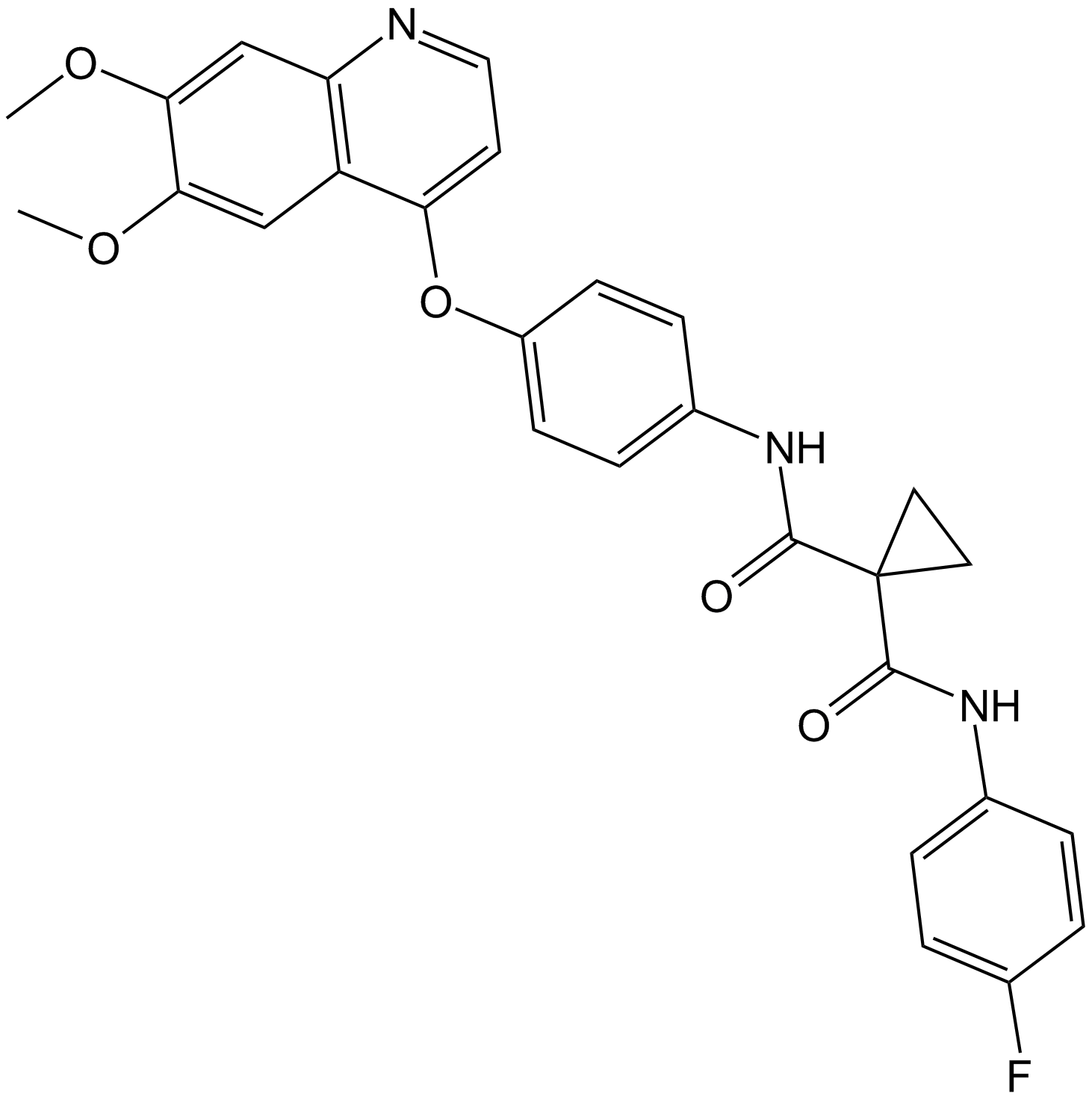
-
GC12531
Cabozantinib malate (XL184)
Cabozantinib malate (XL184) (XL184 S-malate)은 VEGFR2, c-Met, Kit, Axl 및 Flt3를 각각 0.035, 1.3, 4.6, 7 및 11.3 nM의 IC50로 억제하는 강력한 다중 수용체 티로신 키나아제 억제제입니다.
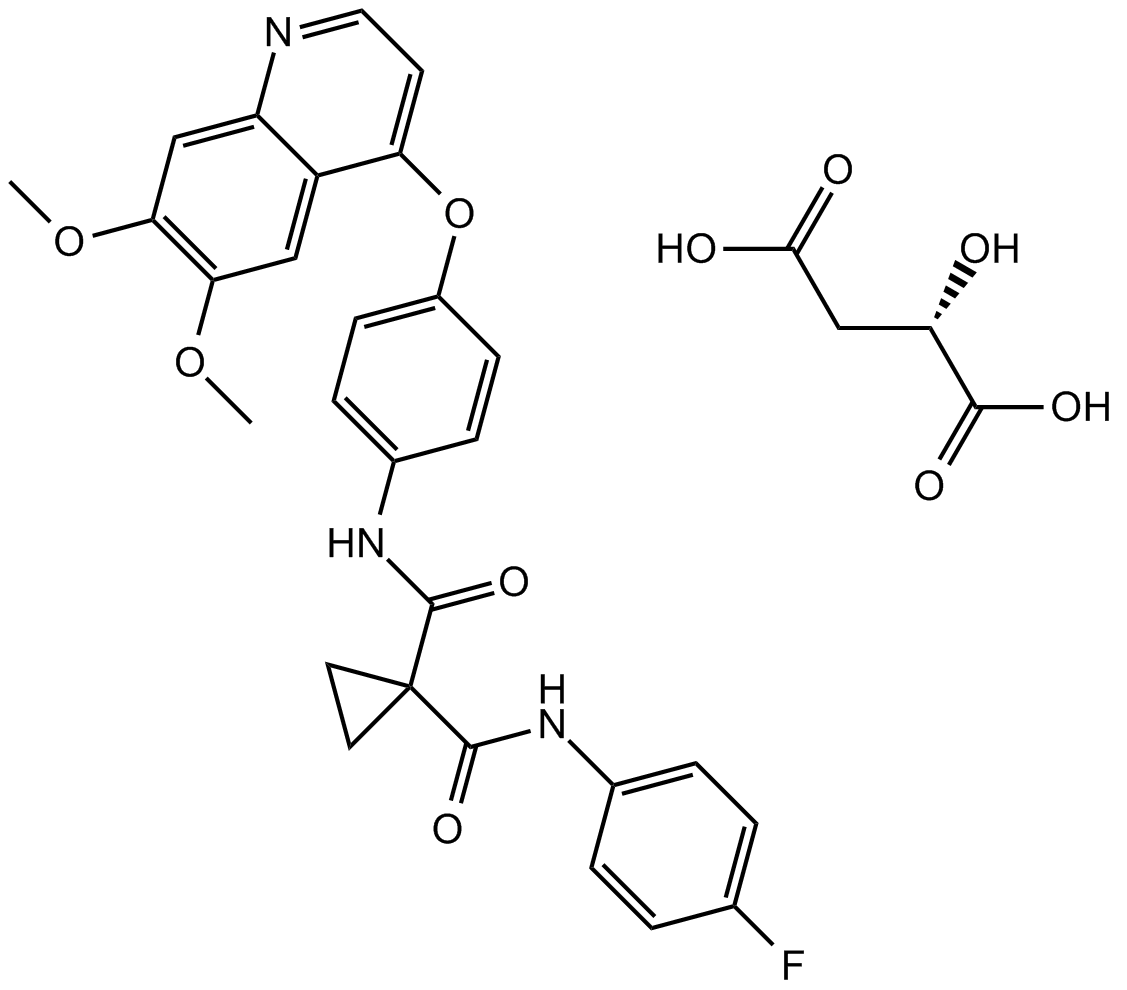
-
GC10692
Caffeic Acid Phenethyl Ester
카페인산 페네틸 에스테르는 NF-κB 억제제입니다.
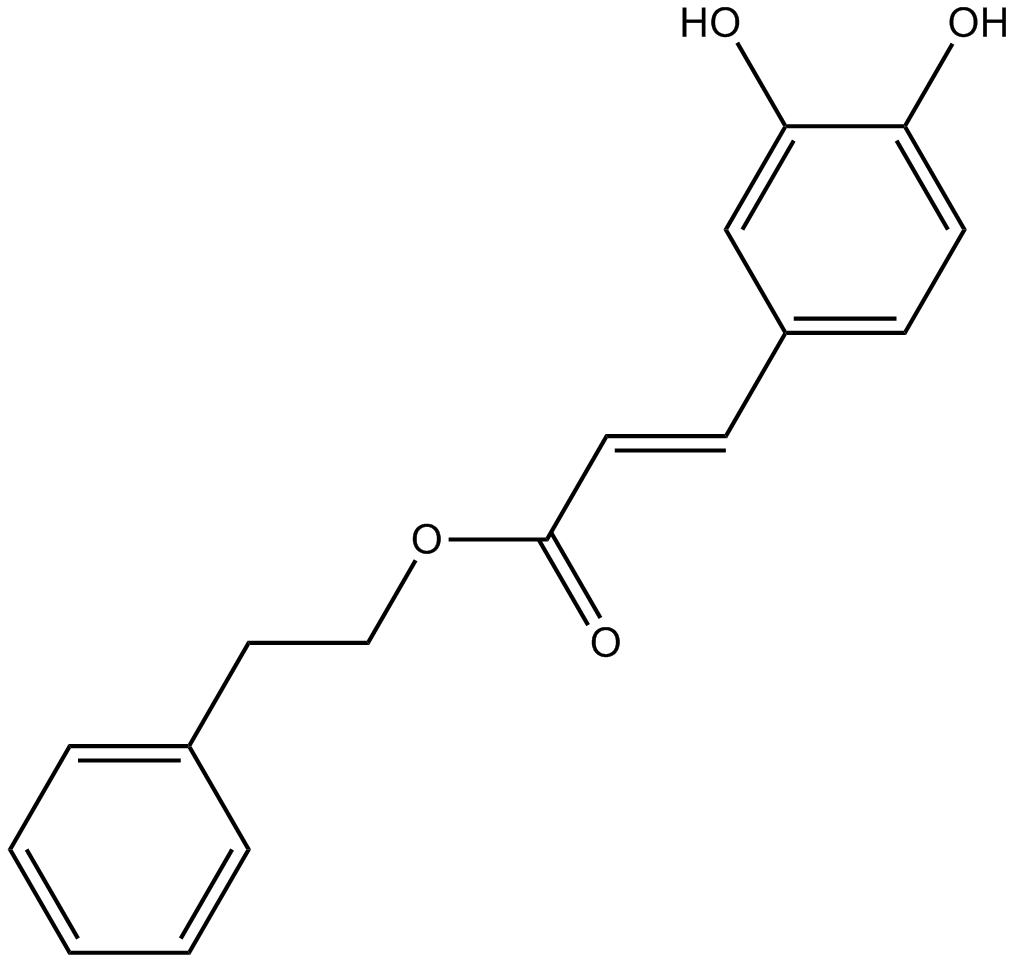
-
GC18604
Calcein Blue AM
Calcein Blue AM은 세포염색제입니다.
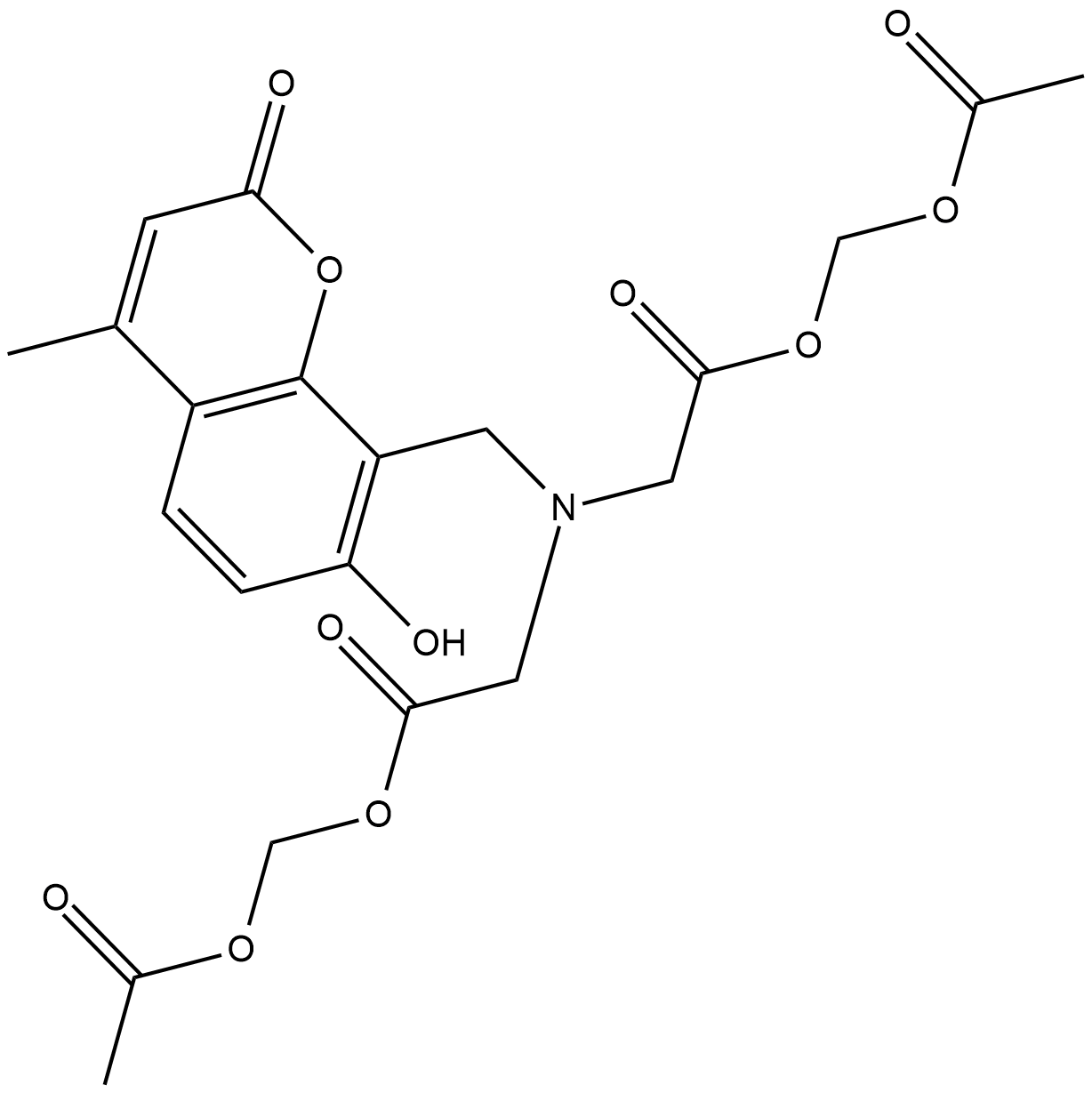
-
GC43121
Calcein Orange™ Diacetate
Calcein Orange Diacetate is a fluorogenic dye that is used to assess cell viability.
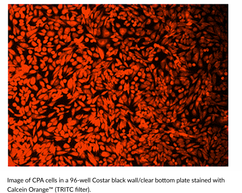
-
GC43123
Calcein Red™ AM
Calcein Red? AM is a fluorogenic dye that is used to assess cell viability.
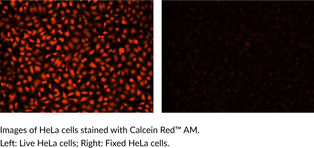
-
GC60668
Calcimycin hemimagnesium
칼시마이신(A-23187) 헤미마그네슘은 항생제이자 독특한 2가 양이온 이온통로(칼슘 및 마그네슘과 같은)입니다.
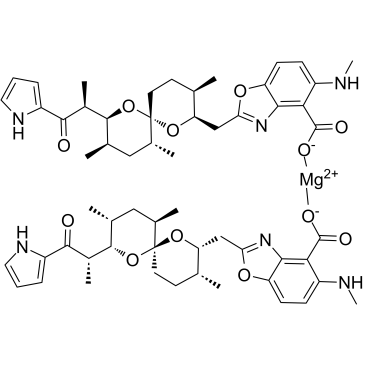
-
GC15161
Calcium D-Panthotenate
비타민인 칼슘 D-판토텐산염(비타민 B5 칼슘염)은 사과 주스의 파툴린 함량을 감소시킬 수 있습니다.
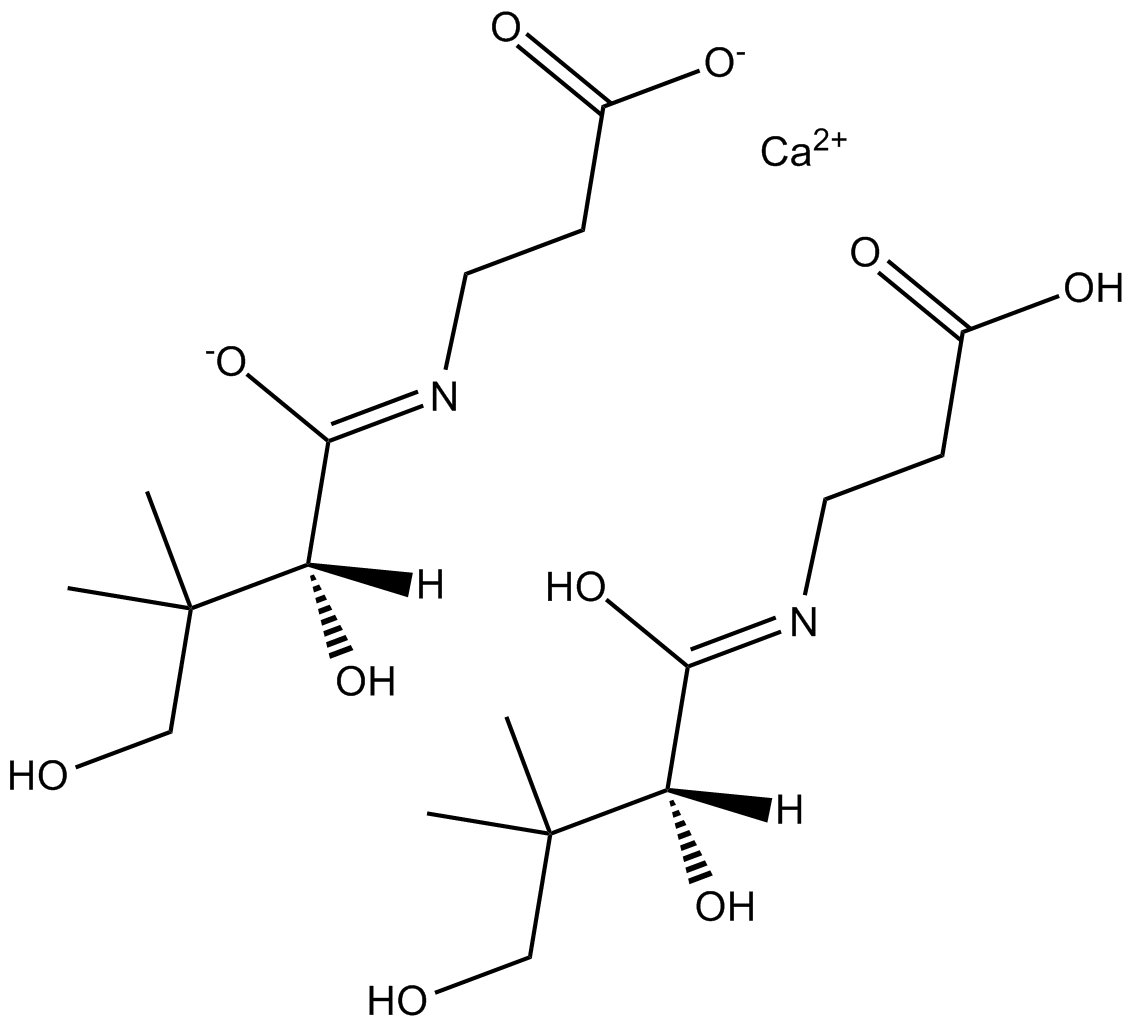
-
GC30240
Calcium dobesilate
혈관 보호제인 칼슘 도베실레이트는 많은 국가에서 만성 정맥 질환, 당뇨병성 망막병증 및 치질 발작의 증상에 널리 사용됩니다.

-
GC19086
Calicheamicin
항종양 항생제인 칼리케아미신은 이중 가닥 DNA 파손을 일으키는 세포독성제입니다.
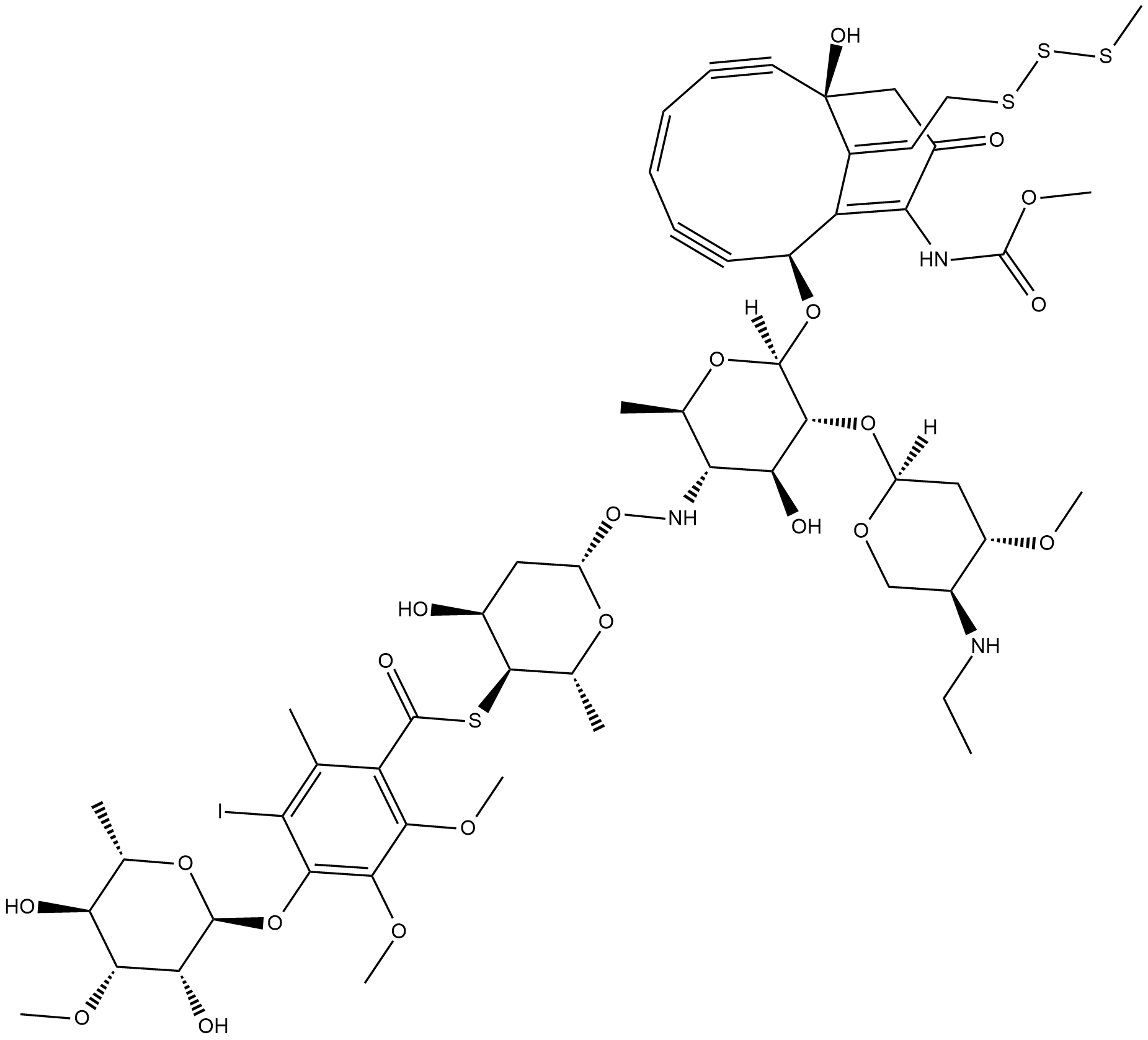
-
GC65081
CALP1 TFA
CALP1 TFA는 CaM EF-hand/Ca2+- 결합 부위에 결합하는 칼모듈린(CaM) 작용제(88 μM의 Kd)입니다.
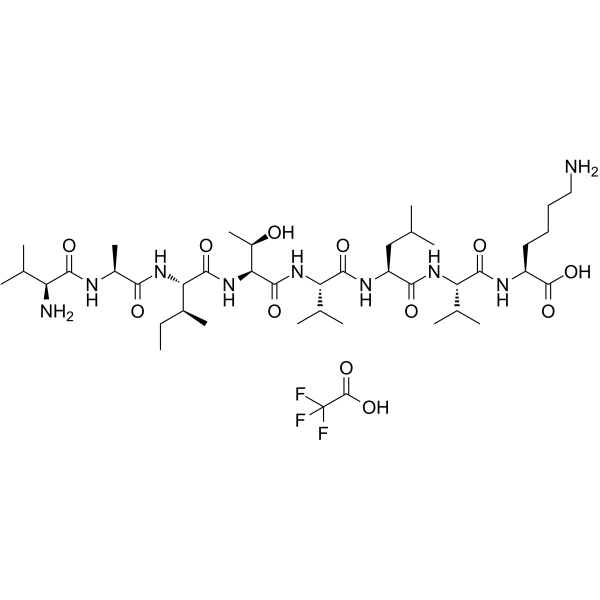
-
GC18315
Calpain Inhibitor VI
Calpain inhibitor VI is an inhibitor of the calcium-dependent cysteine proteases u-calpain (calpain-1; IC50 = 7.5 nM) and m-calpain (calpain-2; IC50 = 78 nM).
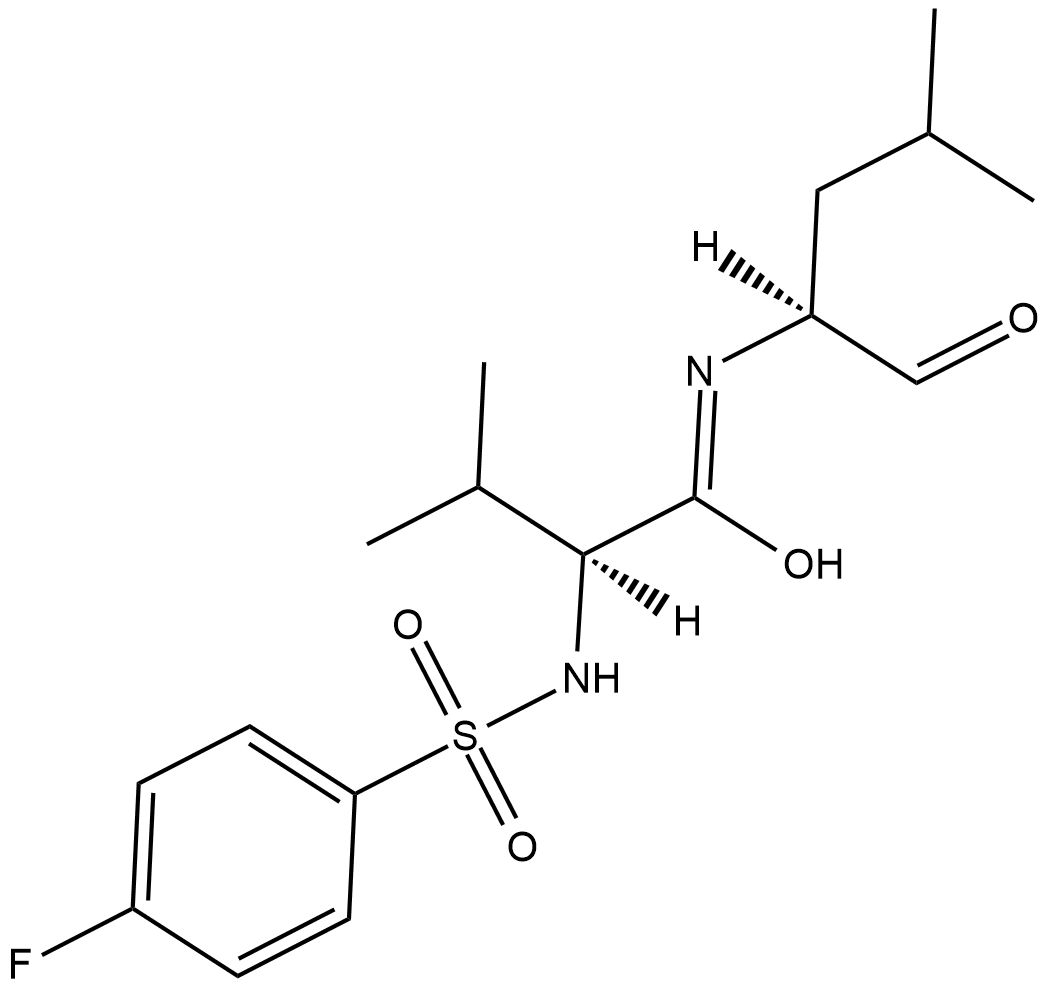
-
GC10342
Calpeptin
A calpain inhibitor
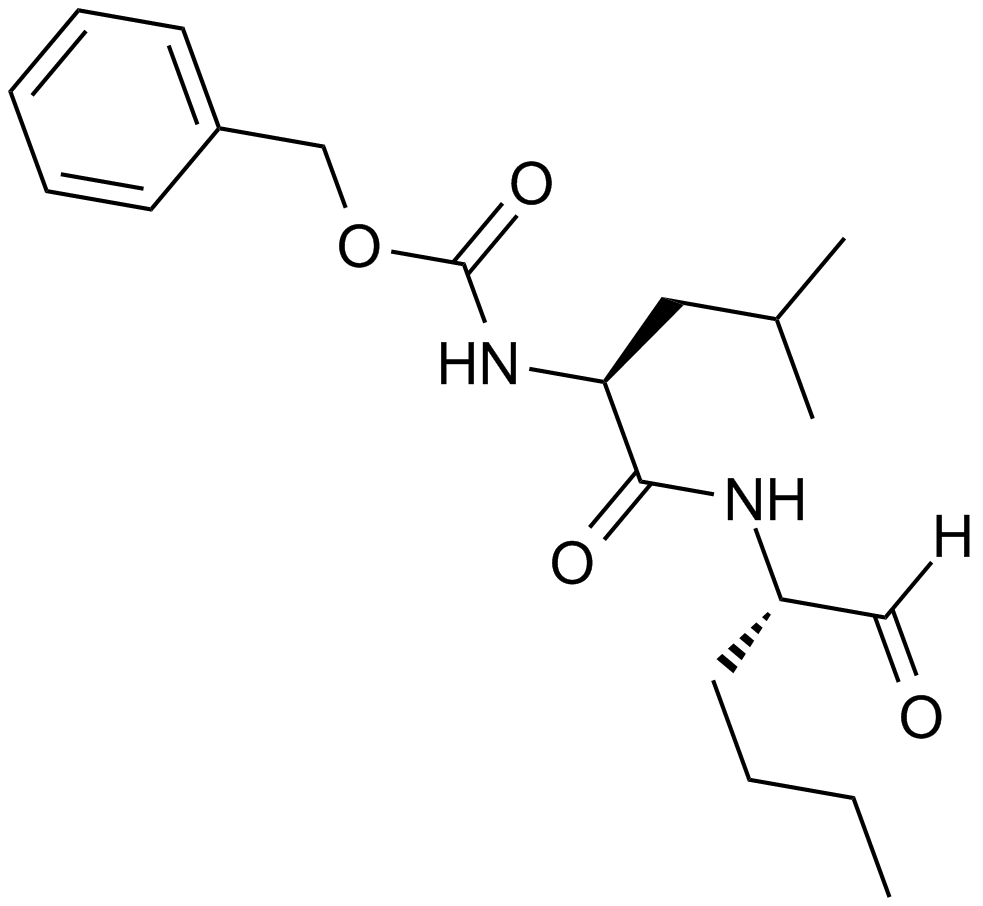
-
GN10667
Calycosin
Calycosin (CA, 7, 3-dihydroxy-4-methoxy isoflavone, C16H12O5) is one of the flavonoids extracted from astragalus root, also known as the typical phytoestrogens.

-
GC35598
Camellianin A
A. nitida 잎의 주요 플라보노이드인 Camellianin A는 항암 활성과 안지오텐신 전환 효소(ACE) 억제 활성을 나타냅니다. 카멜리아닌 A는 인간 Hep G2 및 MCF-7 세포주의 증식을 억제하고 G0/G1 세포 집단의 상당한 증가를 유도합니다.

-
GC62253
Camrelizumab
Camrelizumab(SHR-1210)은 PD-1에 대한 강력한 인간화 고친화성 IgG4-κ 단일클론 항체(mAb)입니다. Camrelizumab은 3nM의 높은 친화도로 PD-1에 결합하고 0.70nM의 IC50으로 PD-1과 PD-L1의 결합 상호작용을 억제합니다. Camrelizumab은 항PD-1/PD-L1 제제로 작용하며 NSCLC, ESCC, Hodgkin 림프종, 진행성 HCC 등을 포함한 암 연구에 사용할 수 있습니다.

-
GC12318
Candesartan Cilexetil
Candesartan Cileexetil(TCV-116)은 주로 고혈압 치료에 사용되는 안지오텐신 II 수용체 길항제입니다.

-
GC15866
Capecitabine
카페시타빈은 티미딘 포스포릴라제에 의해 활성 대사산물인 5-FU로 전환되는 경구 전구약물입니다.

-
GC14065
Capsaicin
다양한 생물학적 활동을 가진 테르펜 알칼로이드
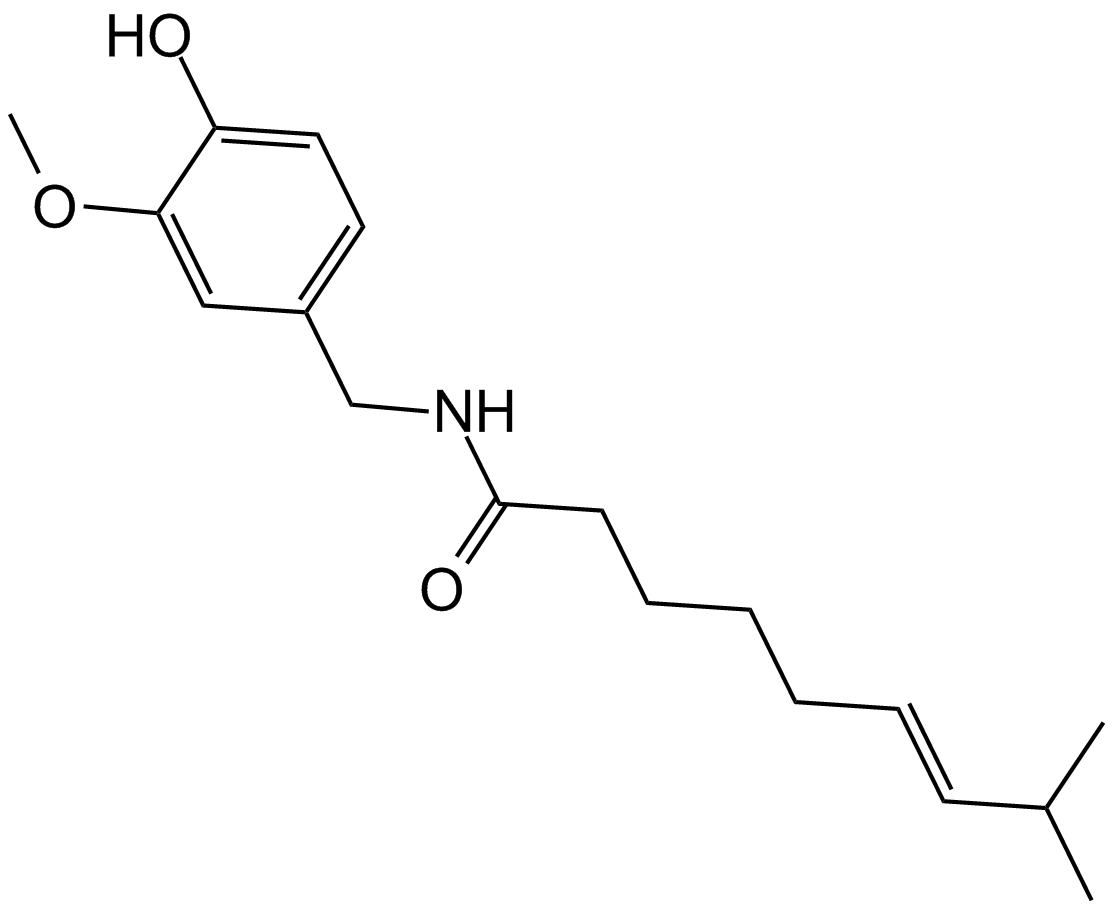
-
GC17918
Capsazepine
A TRPV1 antagonist

-
GC49415
Capsorubin
A carotenoid with diverse biological activities

-
GC48878
Carbazomycin A
A bacterial metabolite with diverse biological activities

-
GC48893
Carbazomycin B
A bacterial metabolite with diverse biological activities

-
GC48850
Carbazomycin C
A bacterial metabolite with diverse biological activities

-
GC48826
Carbazomycin D
A bacterial metabolite with diverse biological activities

-
GC49147
Carboxyphosphamide
An inactive metabolite of cyclophosphamide

-
GC18069
Cardamonin
Cardamonin((E)-Cardamomin)은 IC50이 454nM인 hTRPA1 양이온 채널의 새로운 길항제입니다.

-
GC18449
Cardanol monoene
카르다놀 모노엔(Cardanol C15:1)은 캐슈넛 껍질 액체에서 찾을 수 있는 페놀 화합물입니다. Cardanol monoene은 인간 흑색종 세포에서 미토콘드리아 관련 세포자멸사를 유도할 수 있습니다.

-
GC15089
Carfilzomib (PR-171)
A proteasome inhibitor



